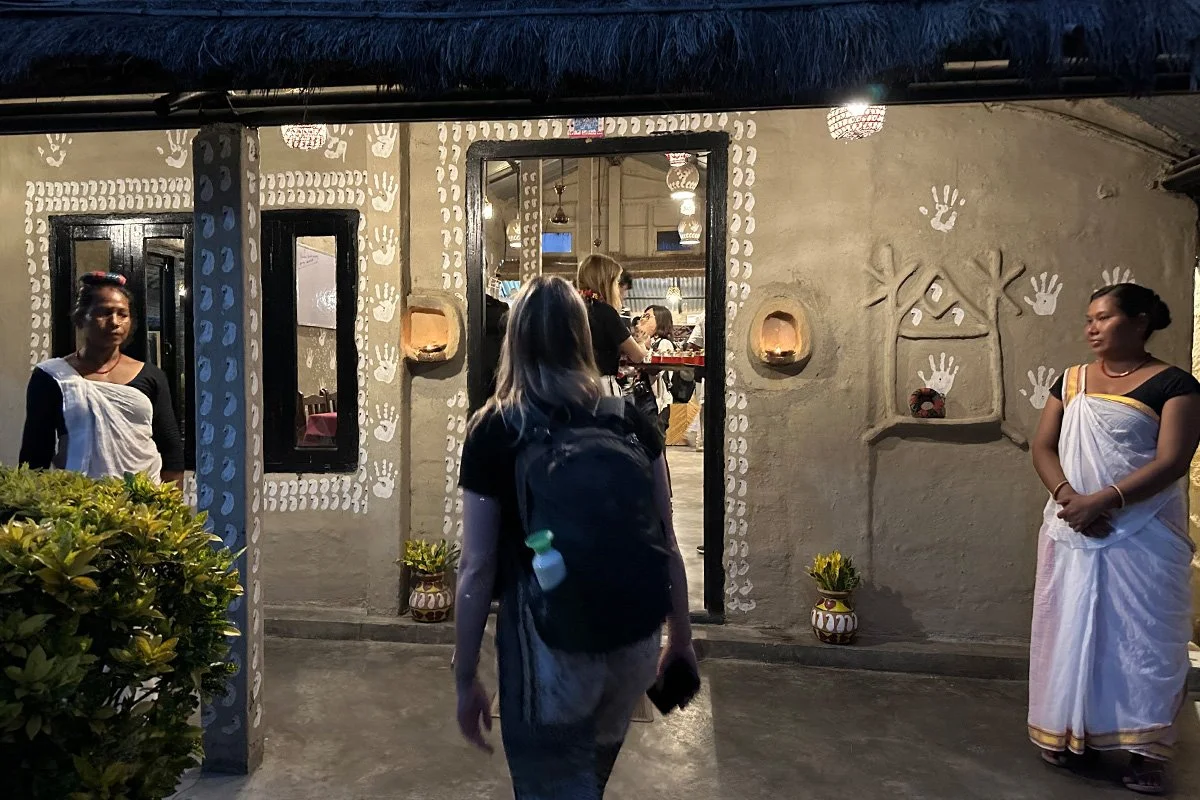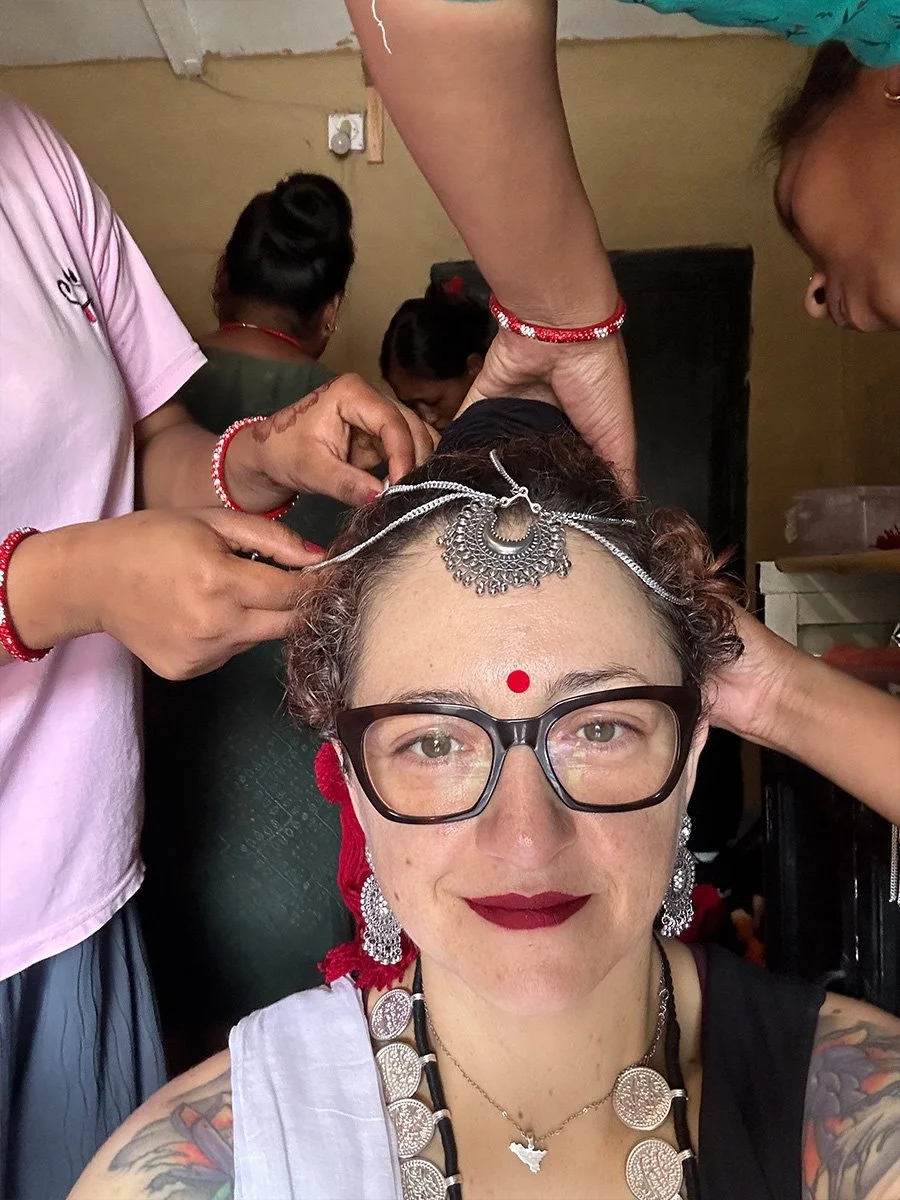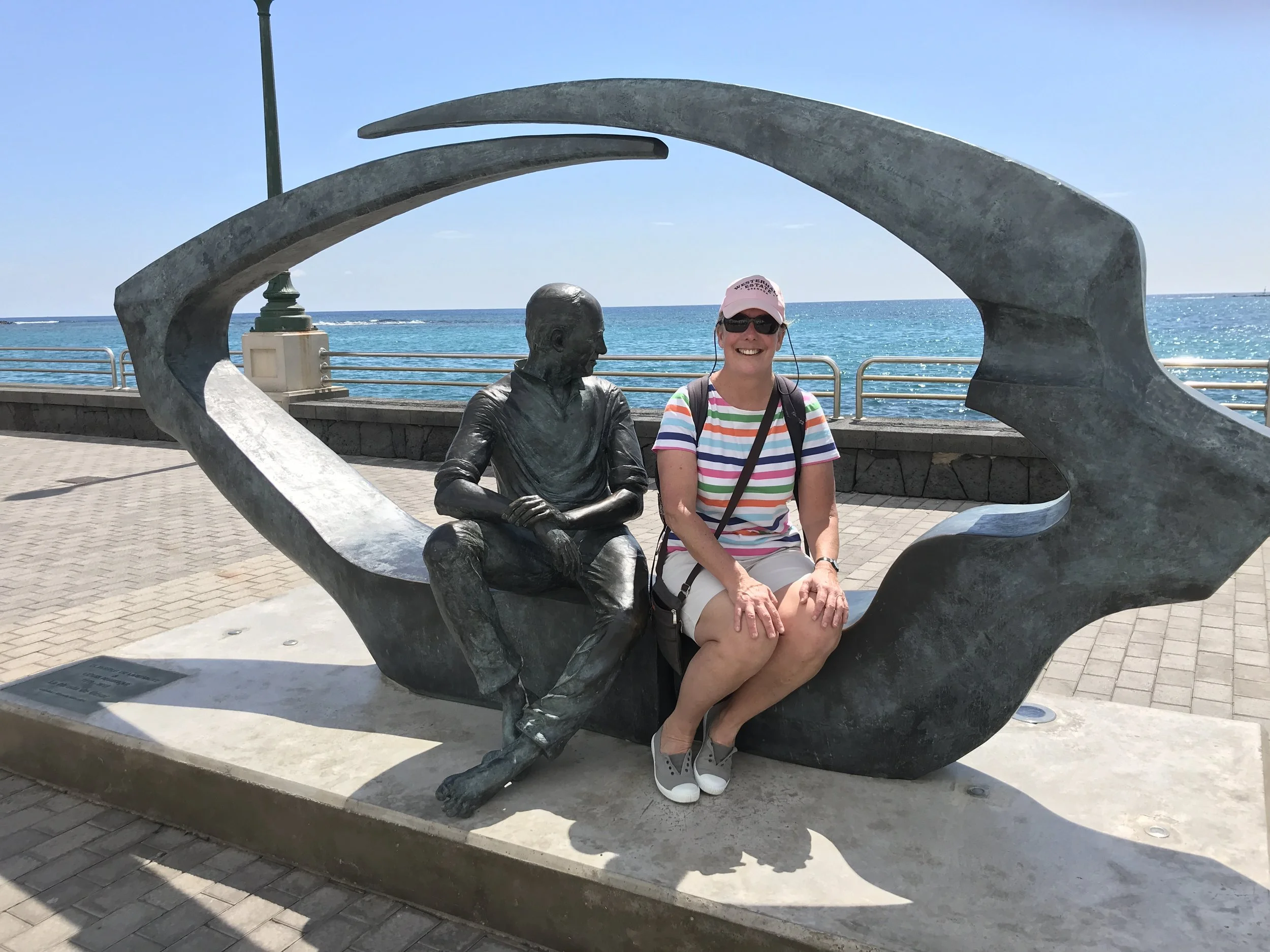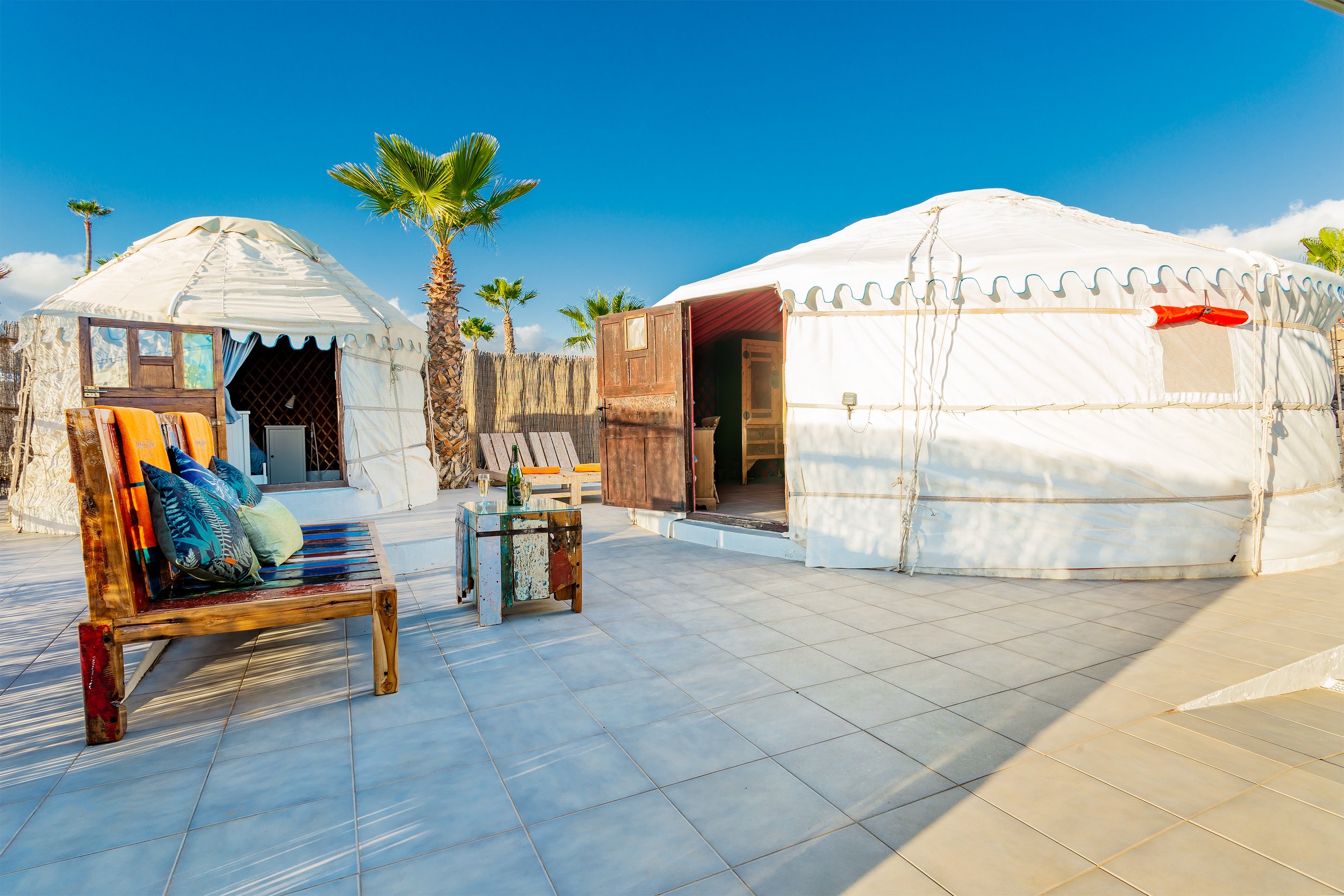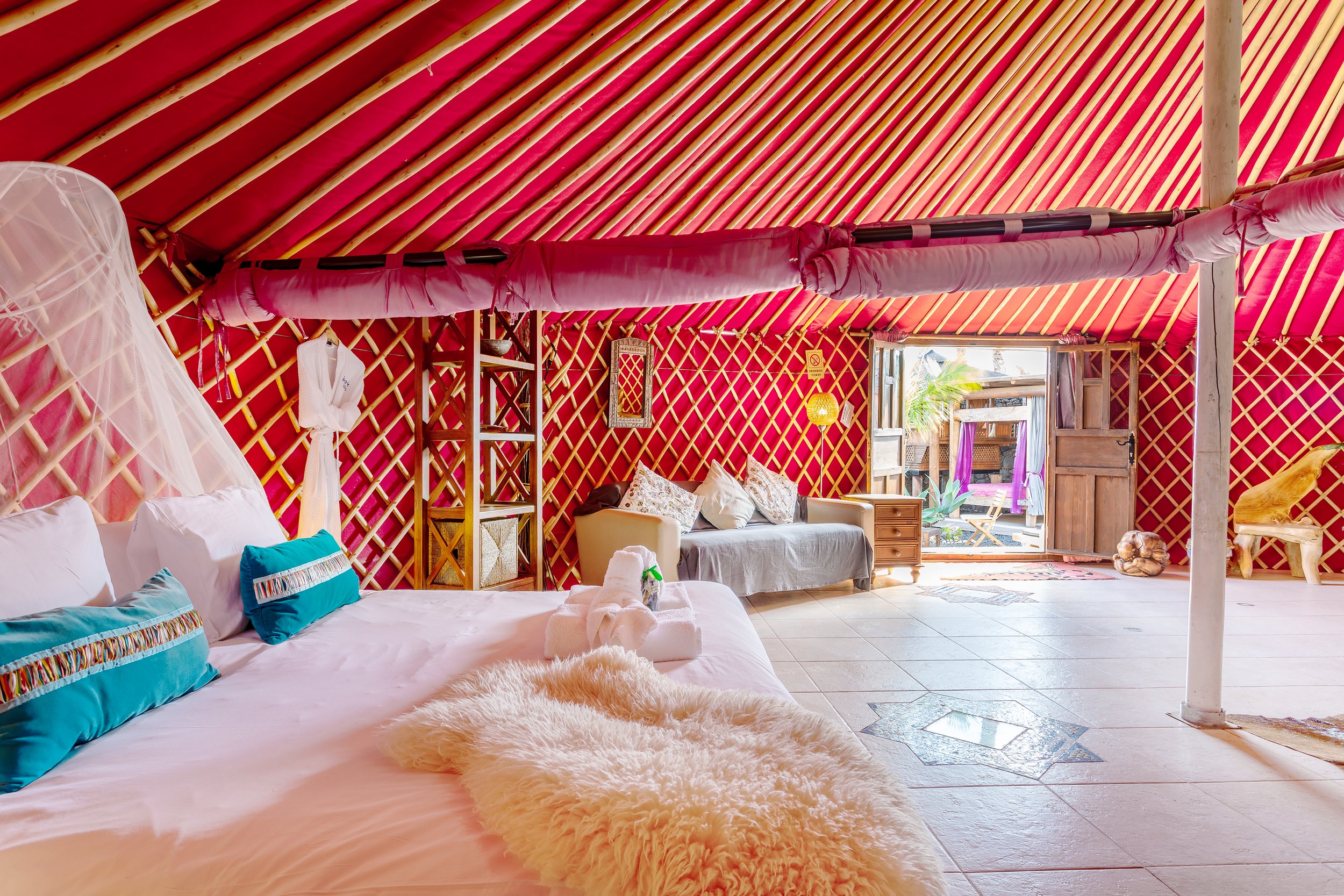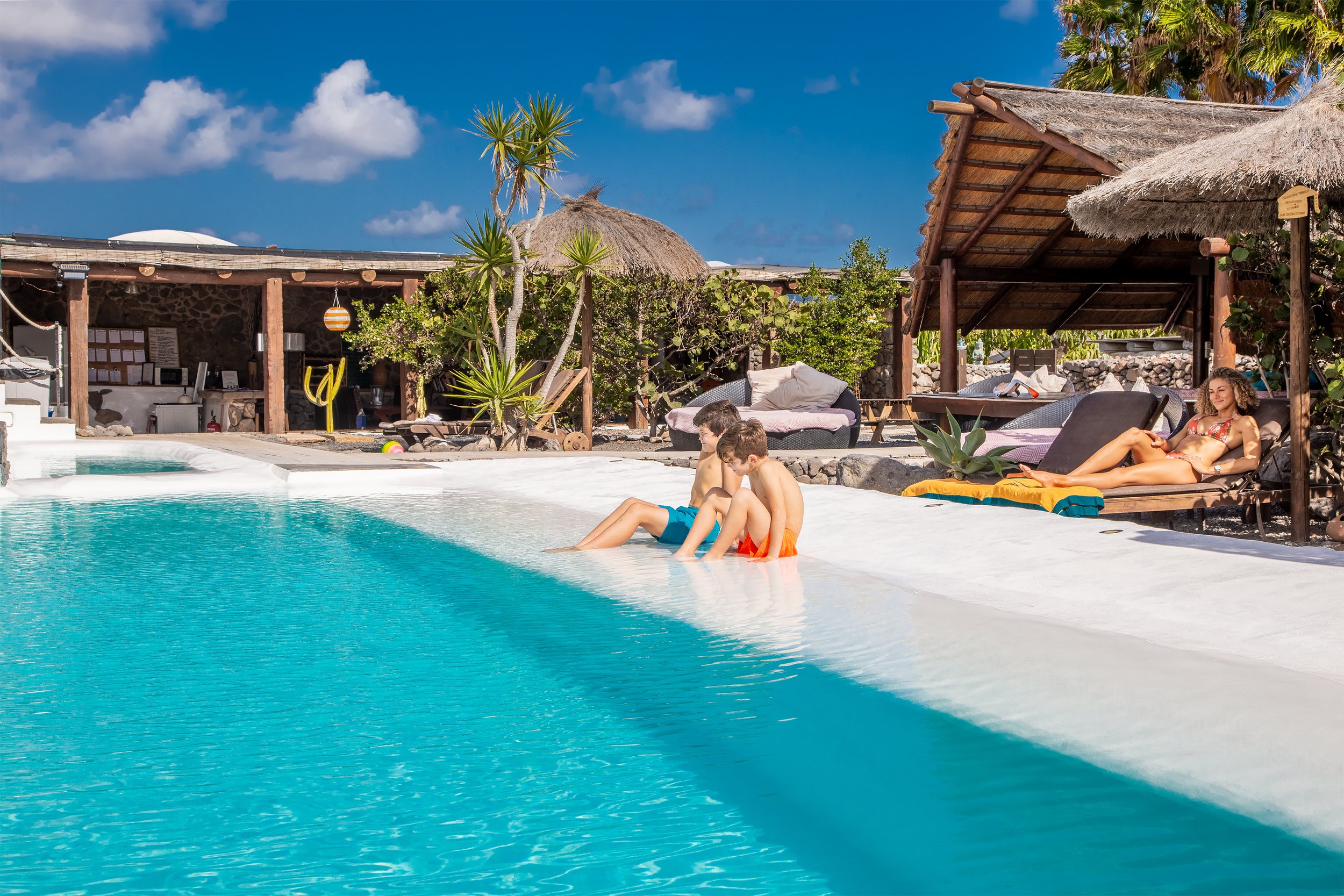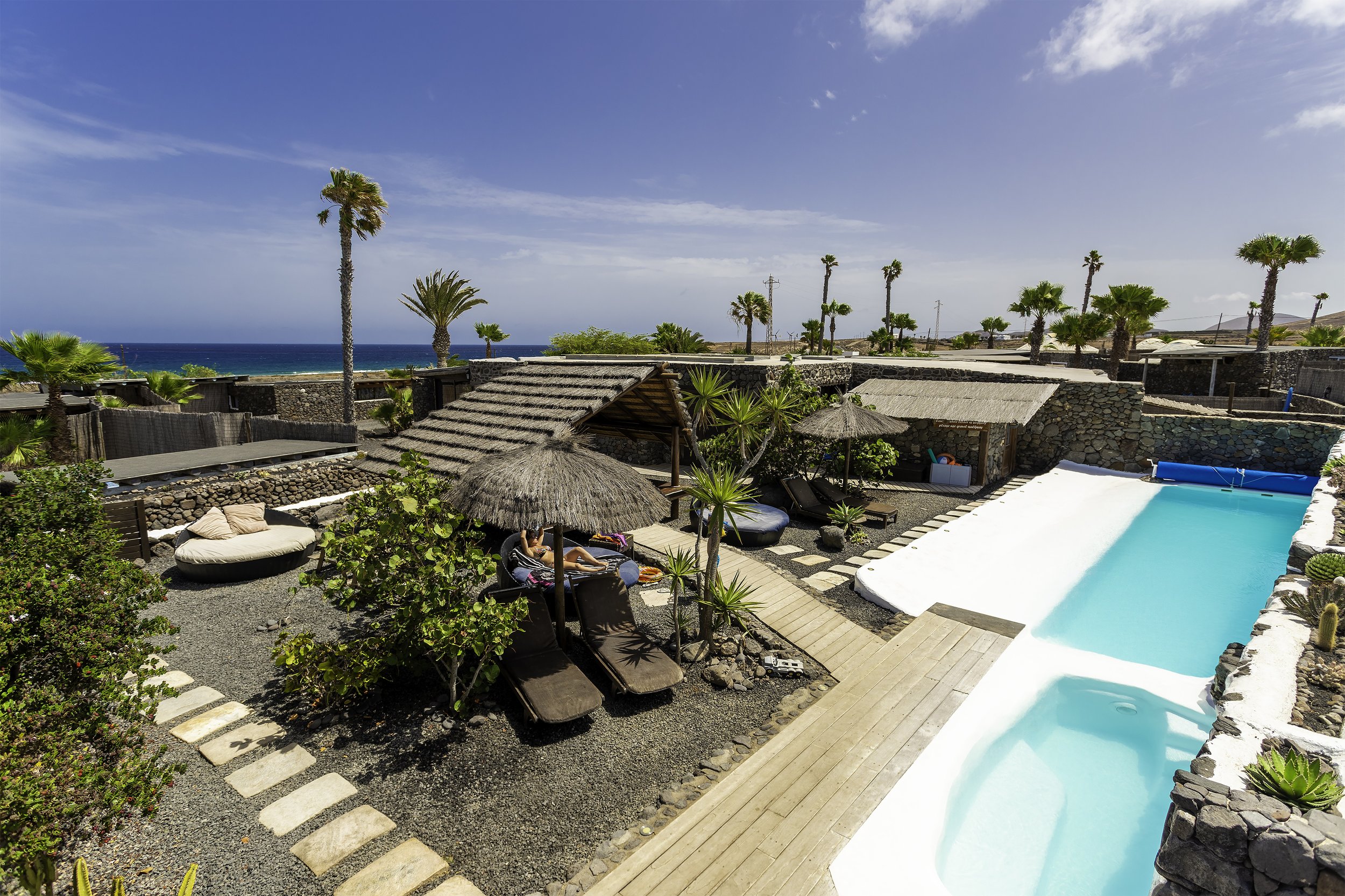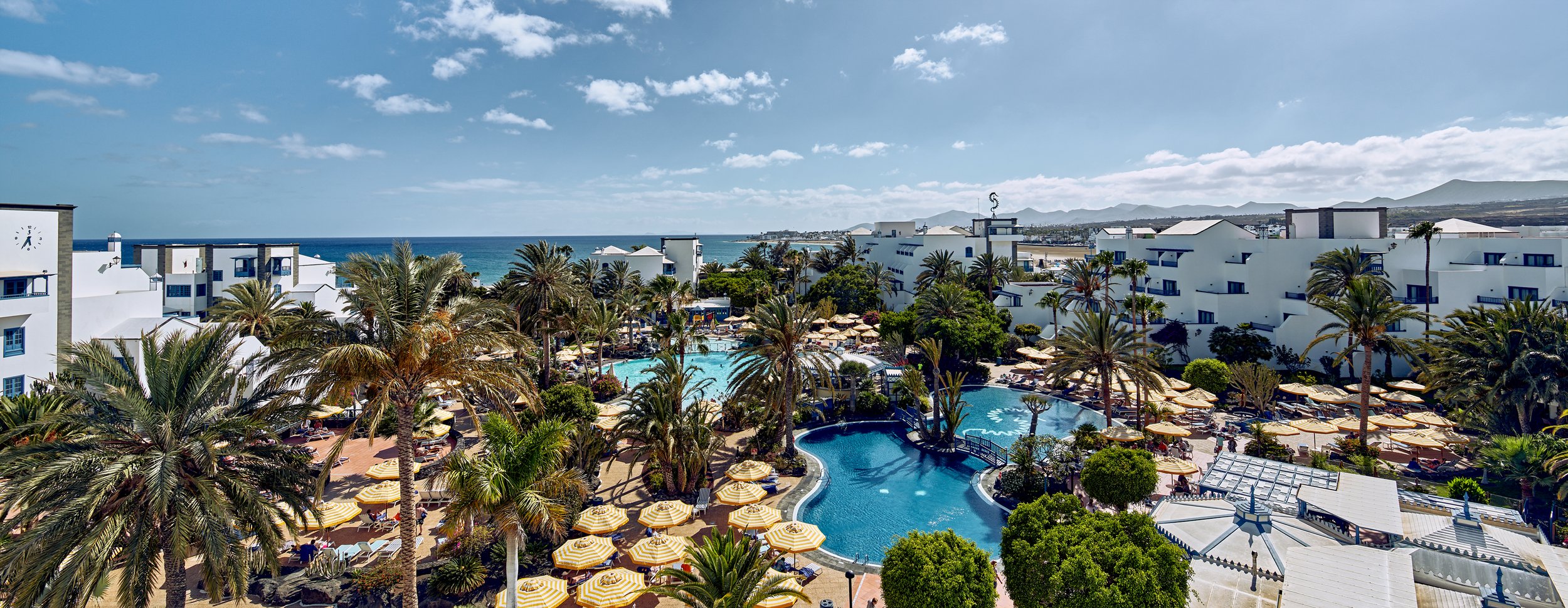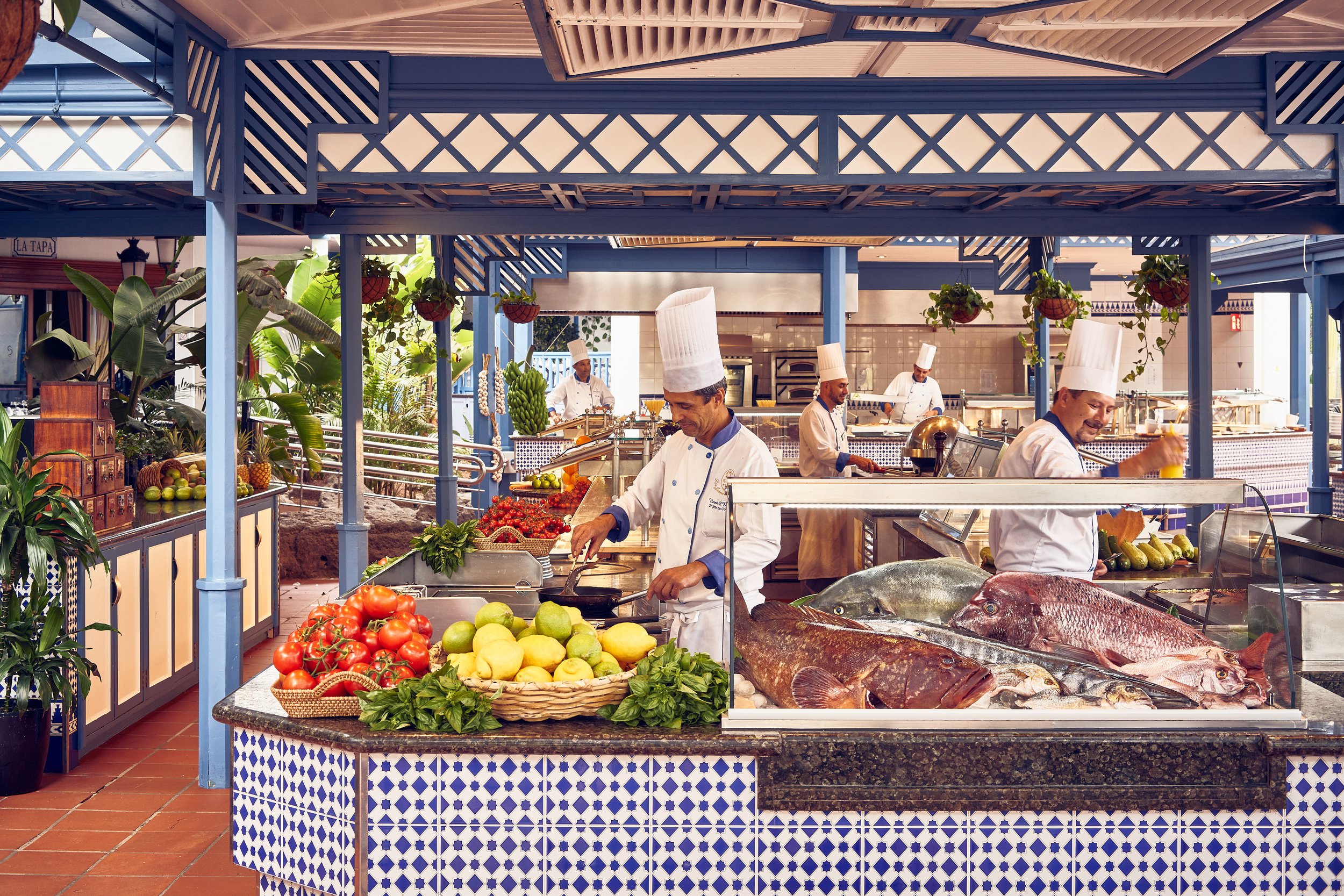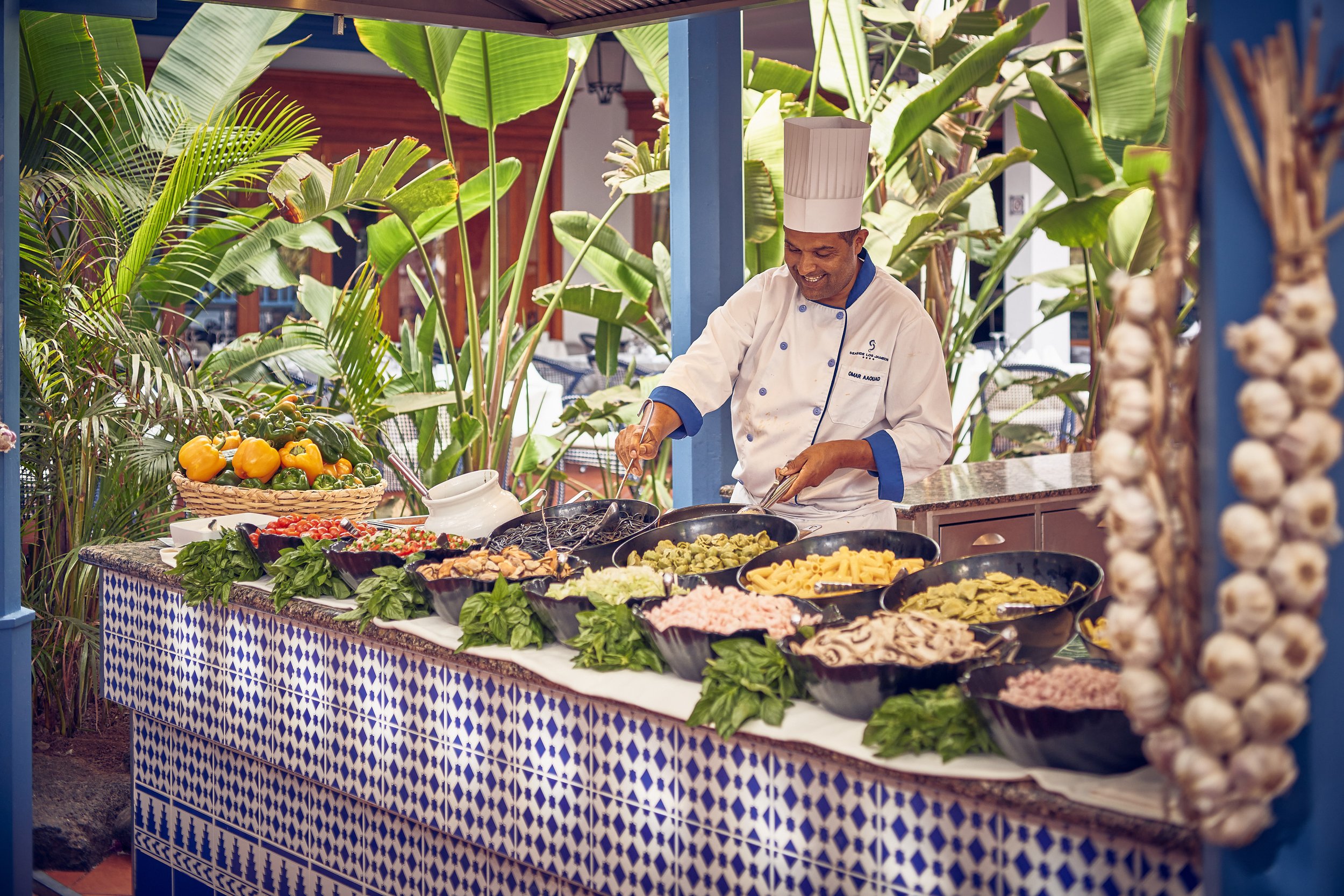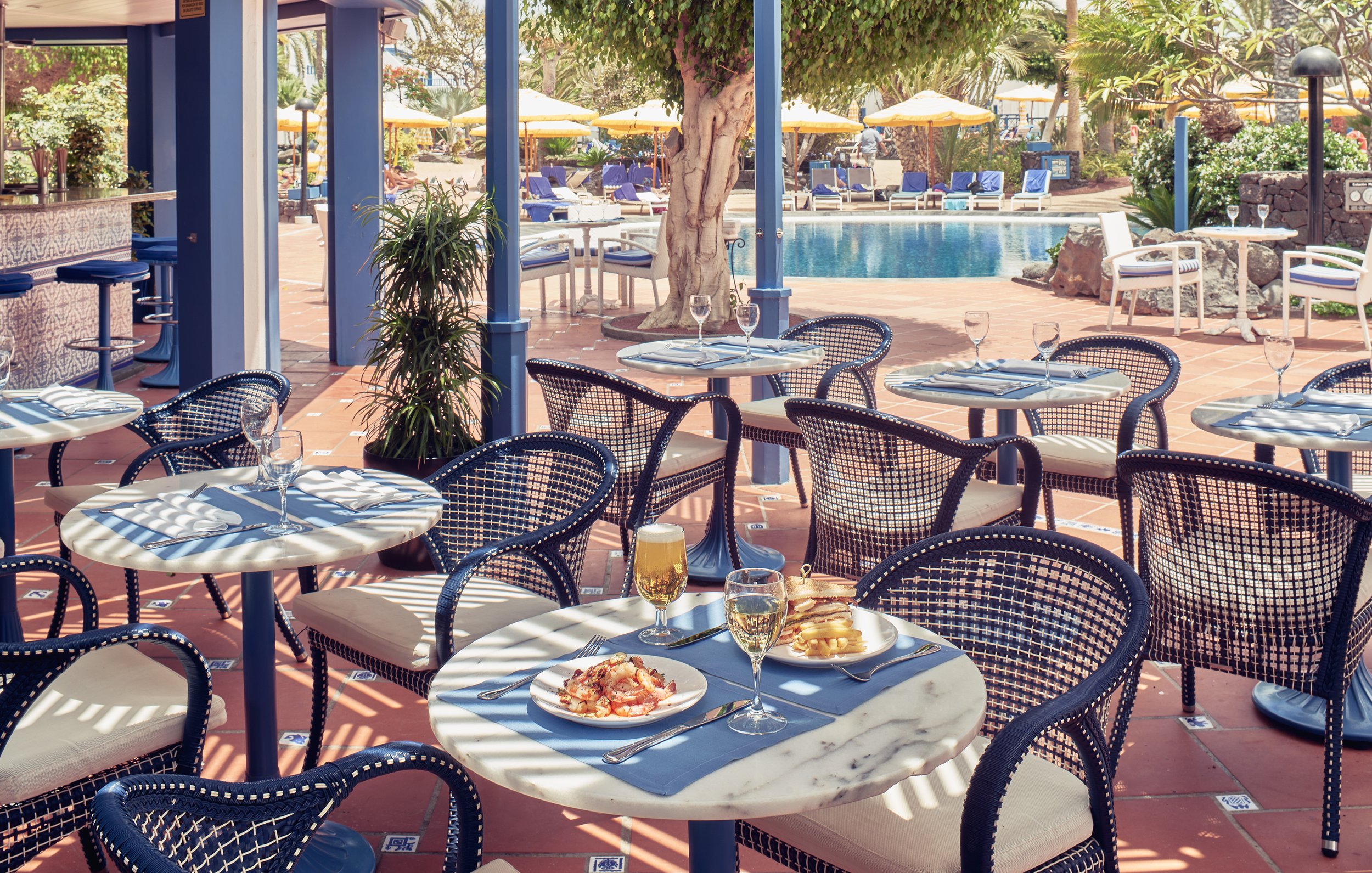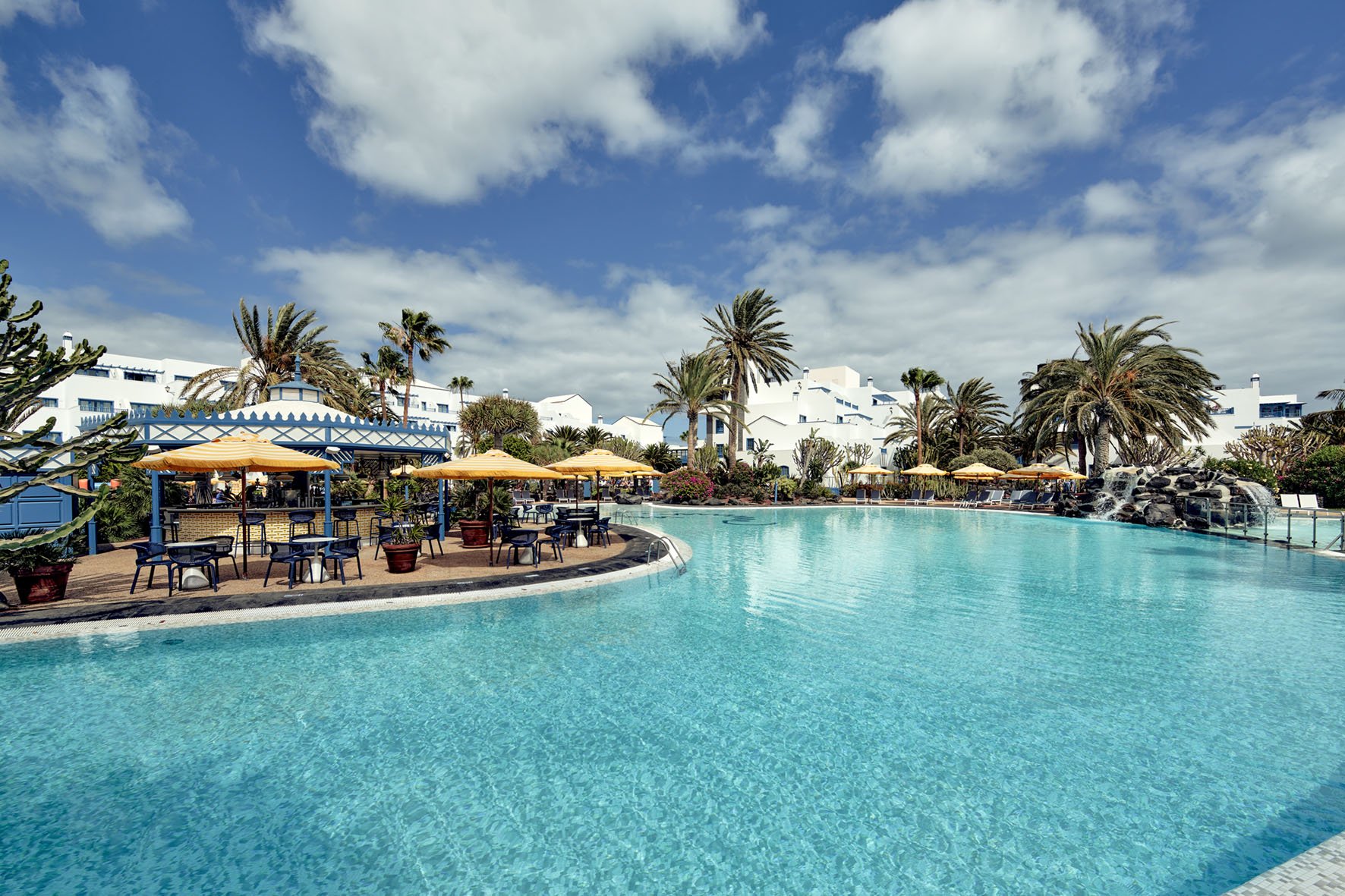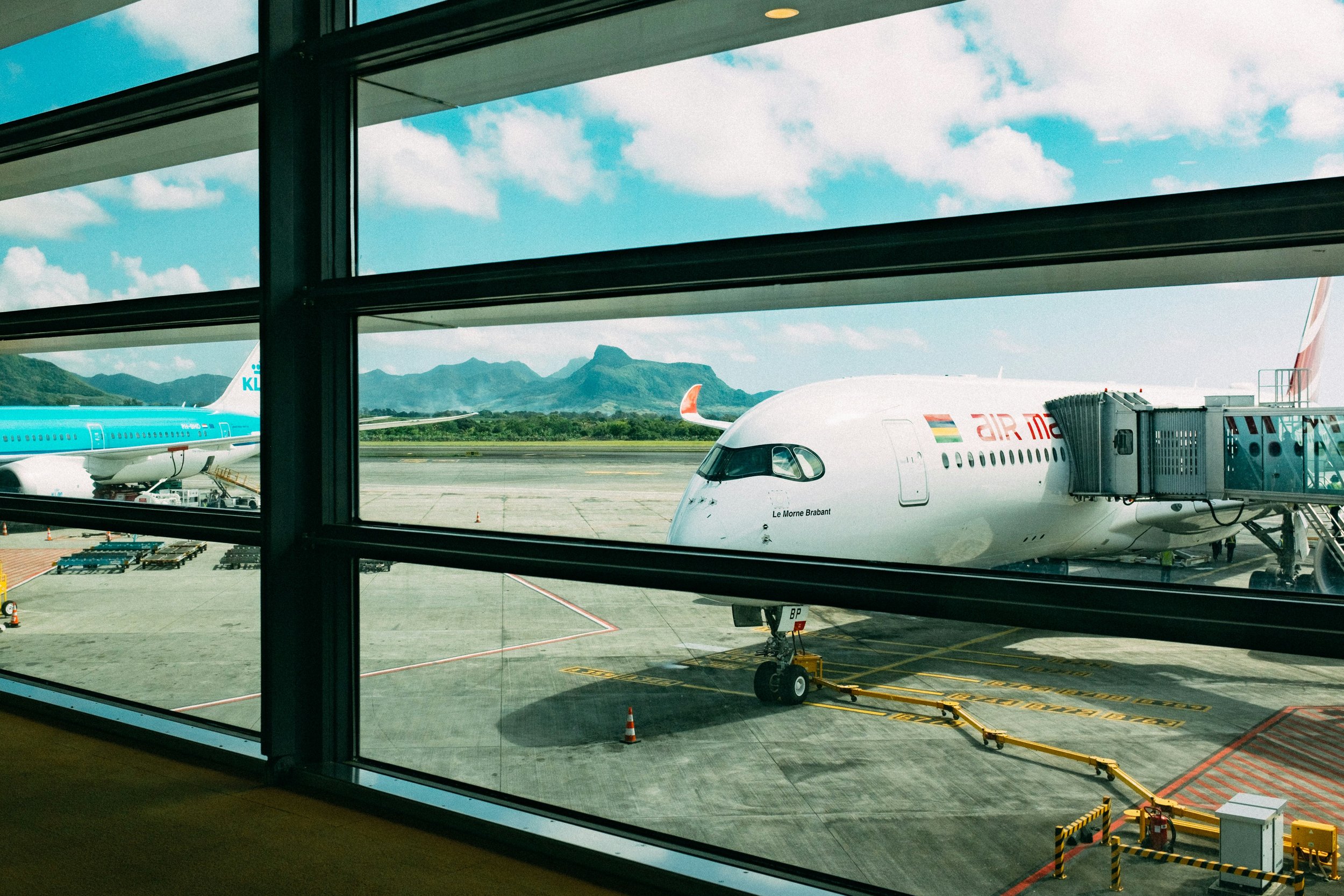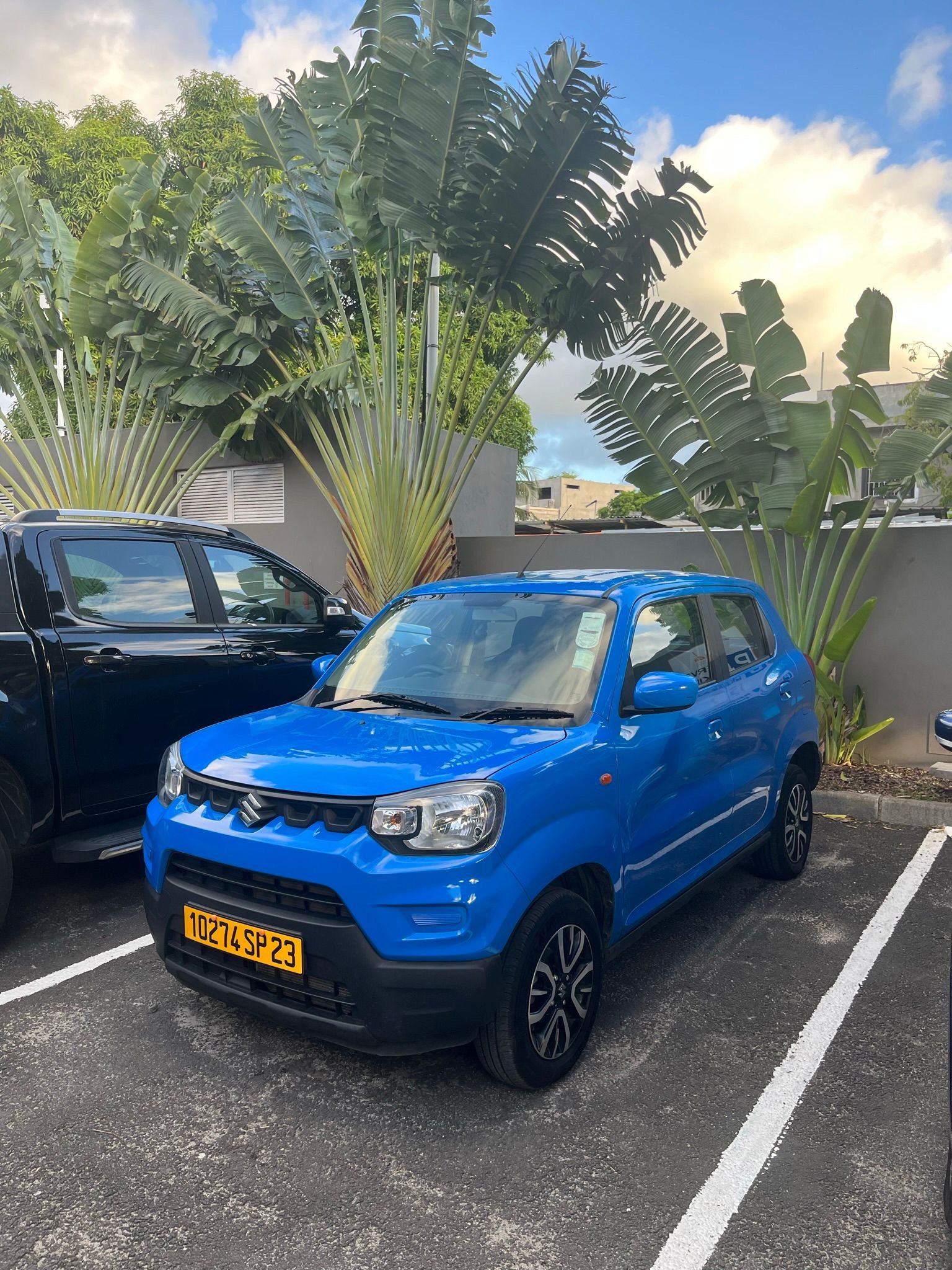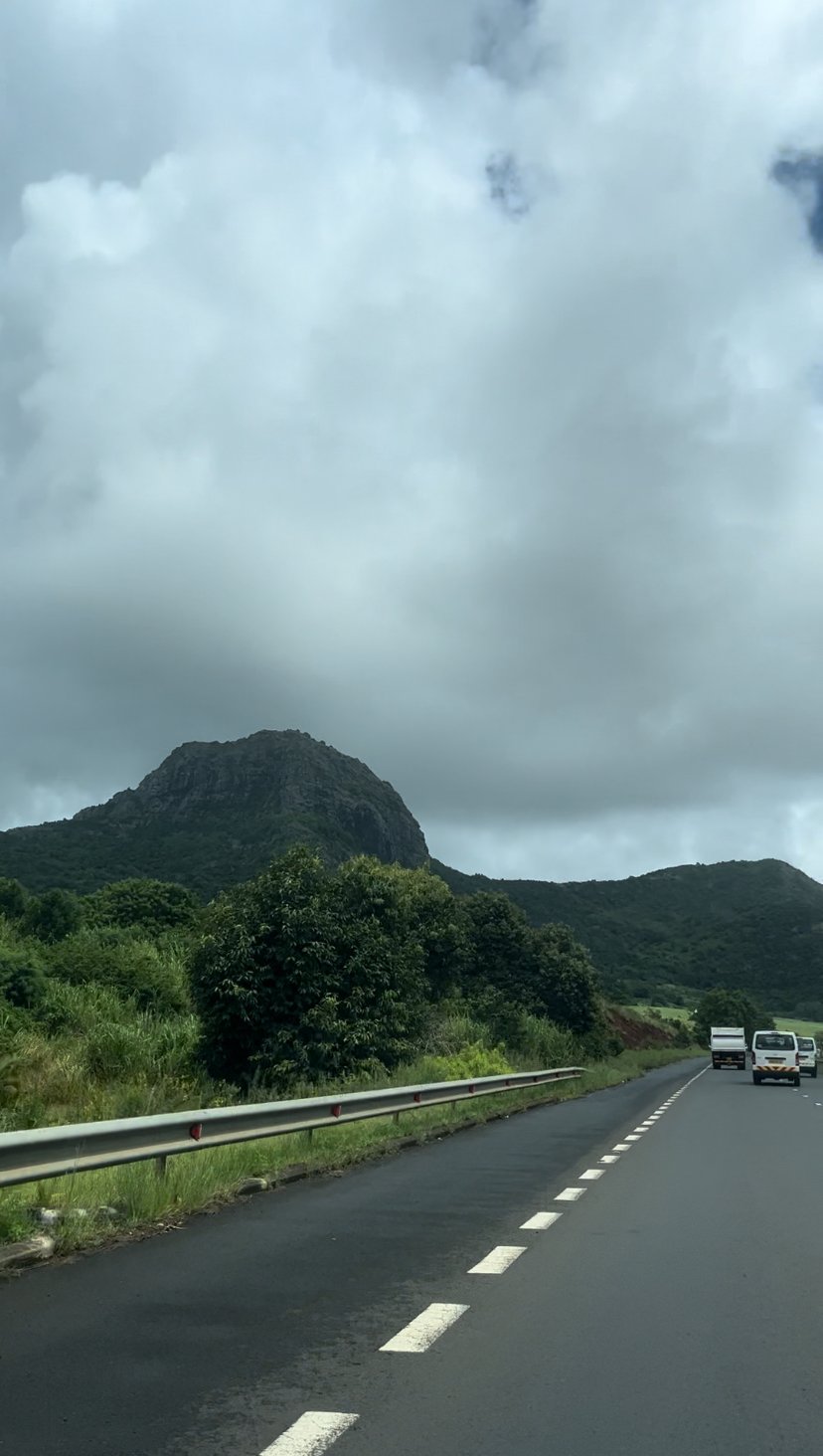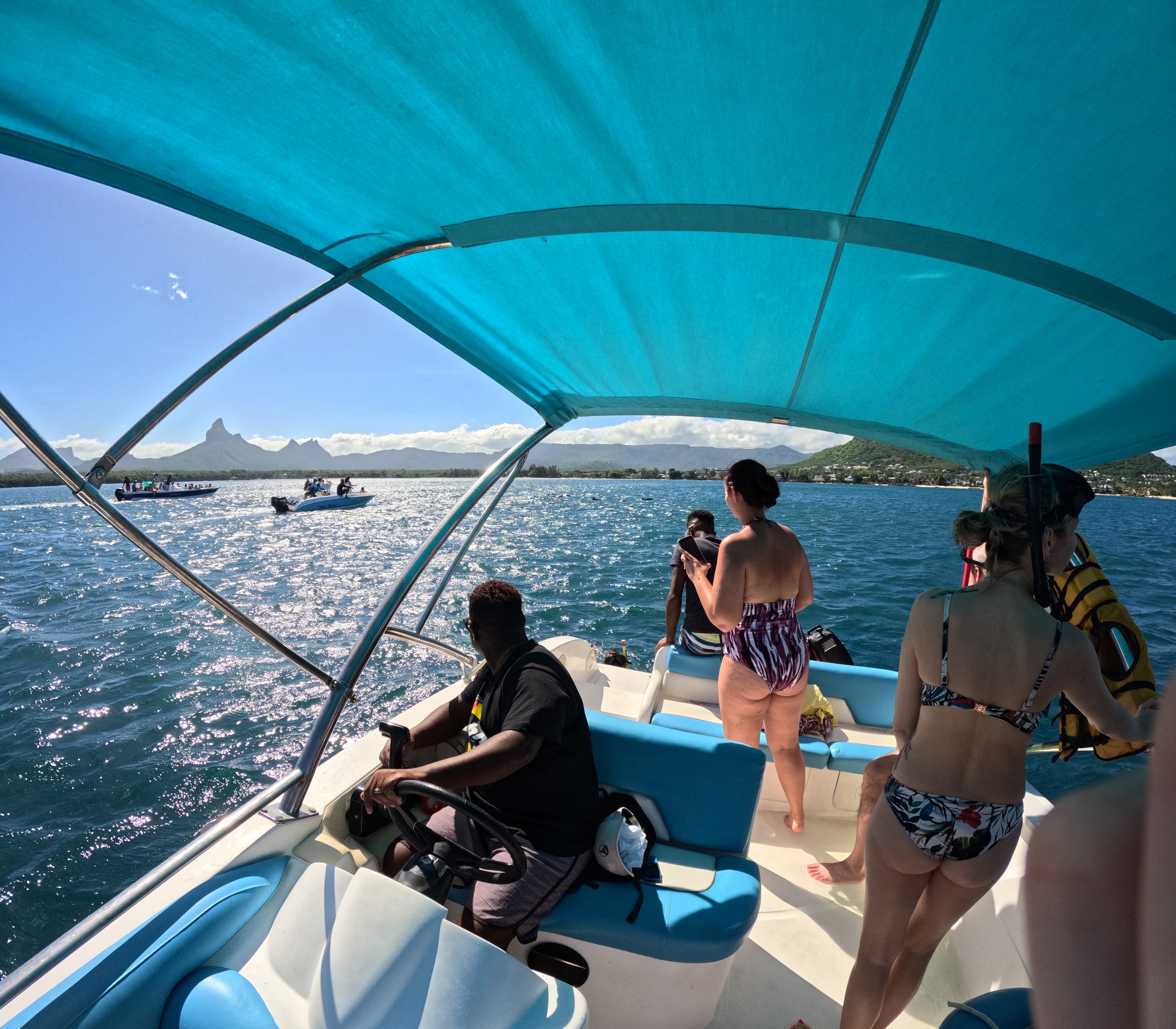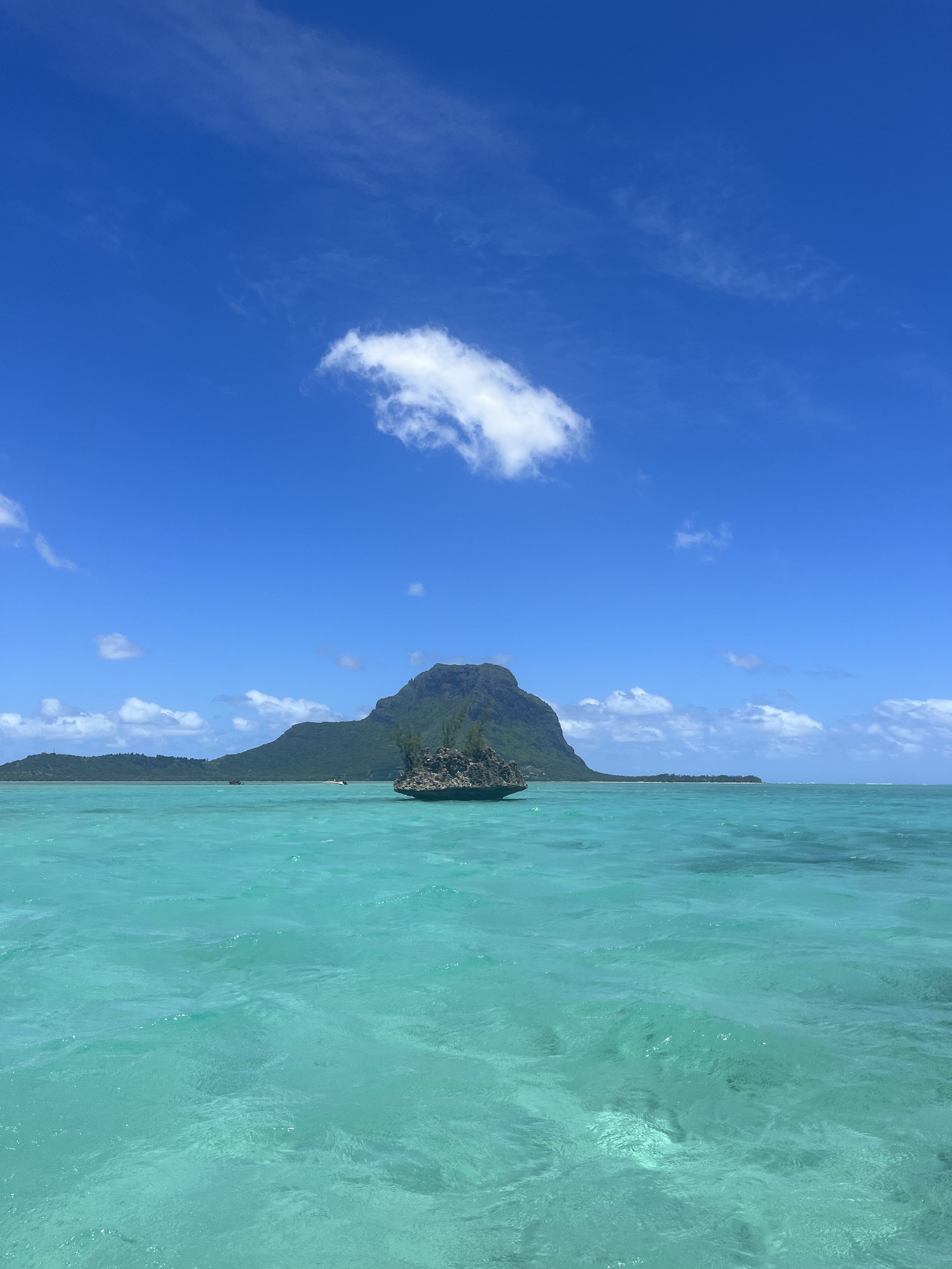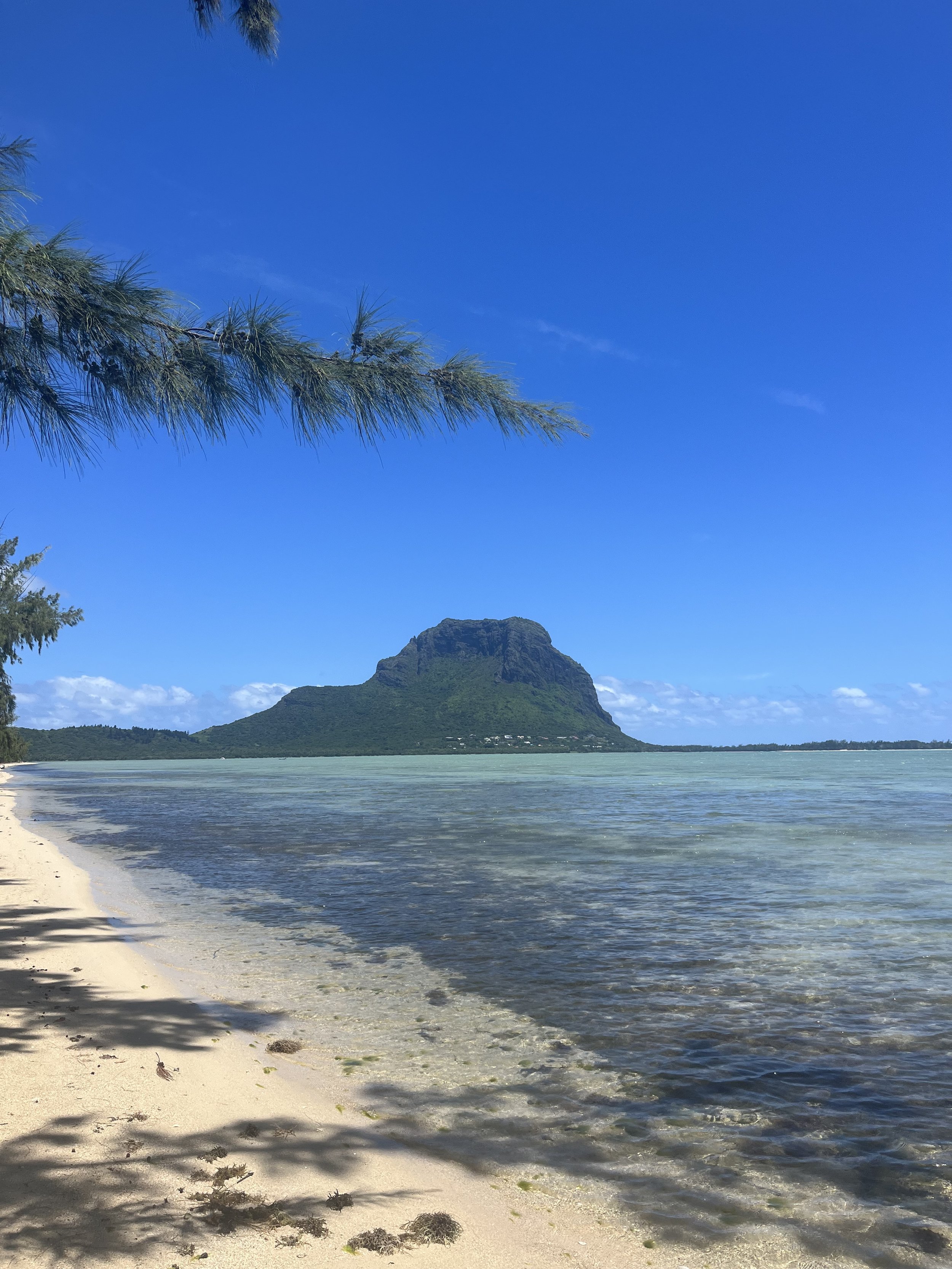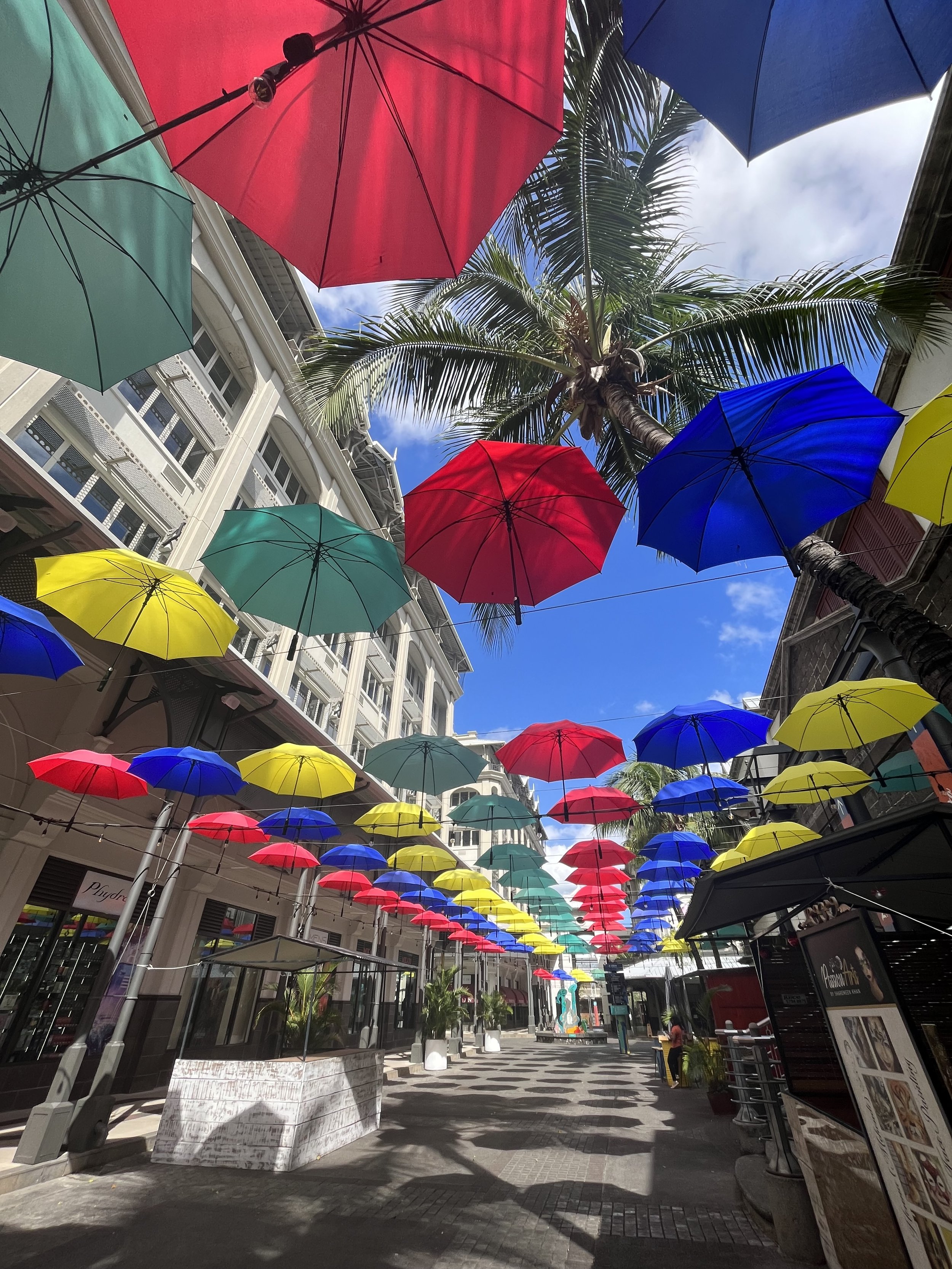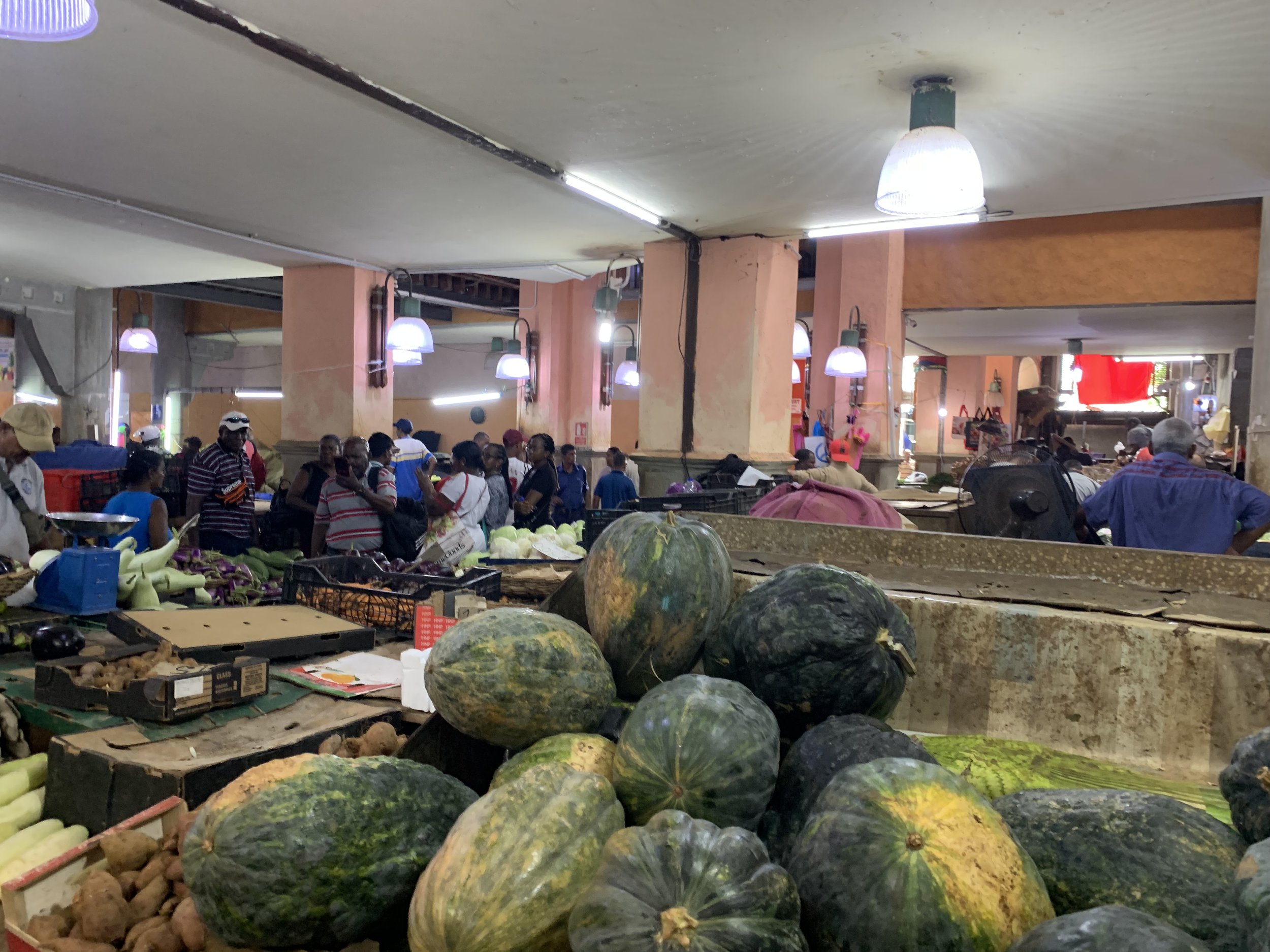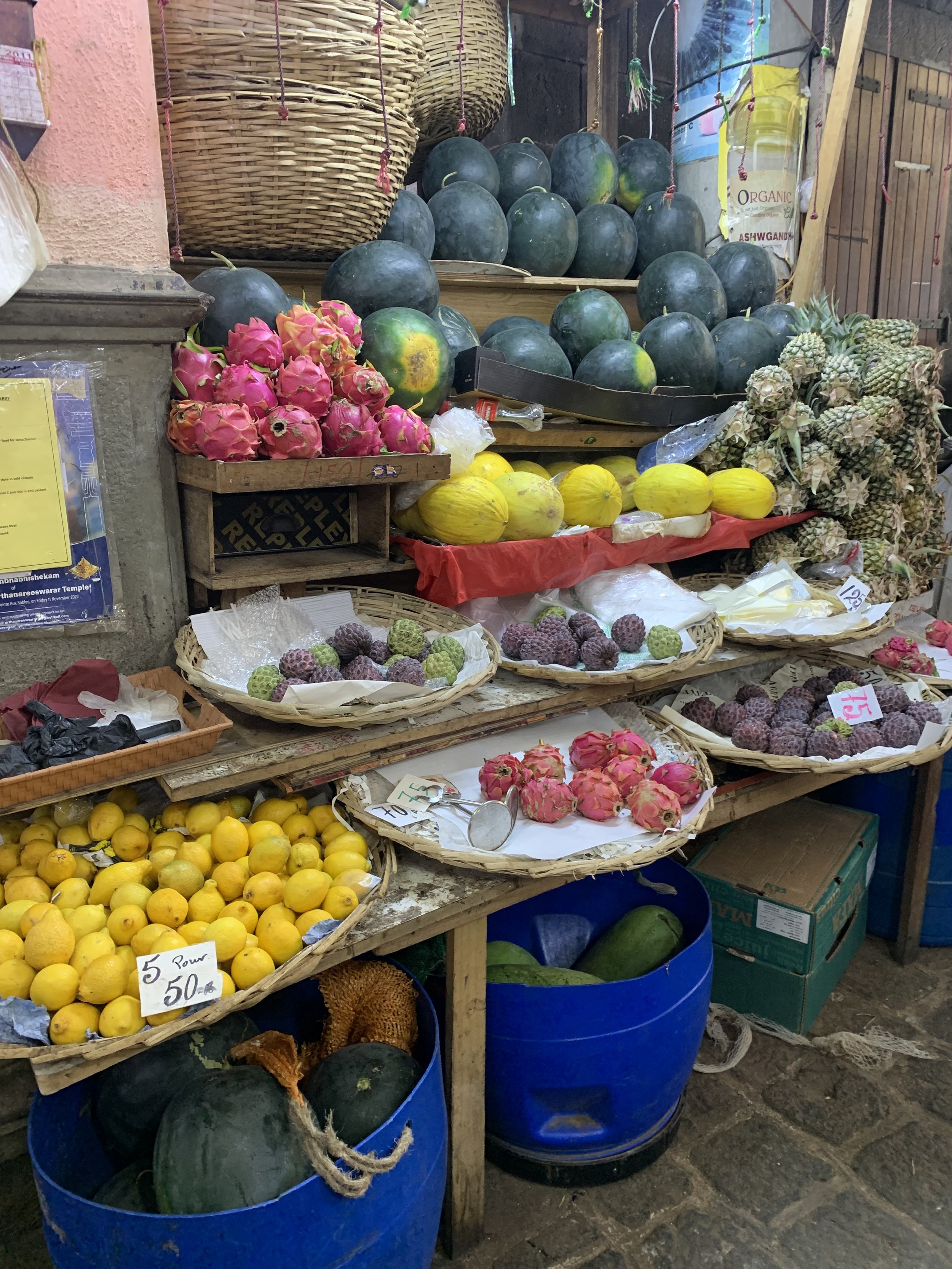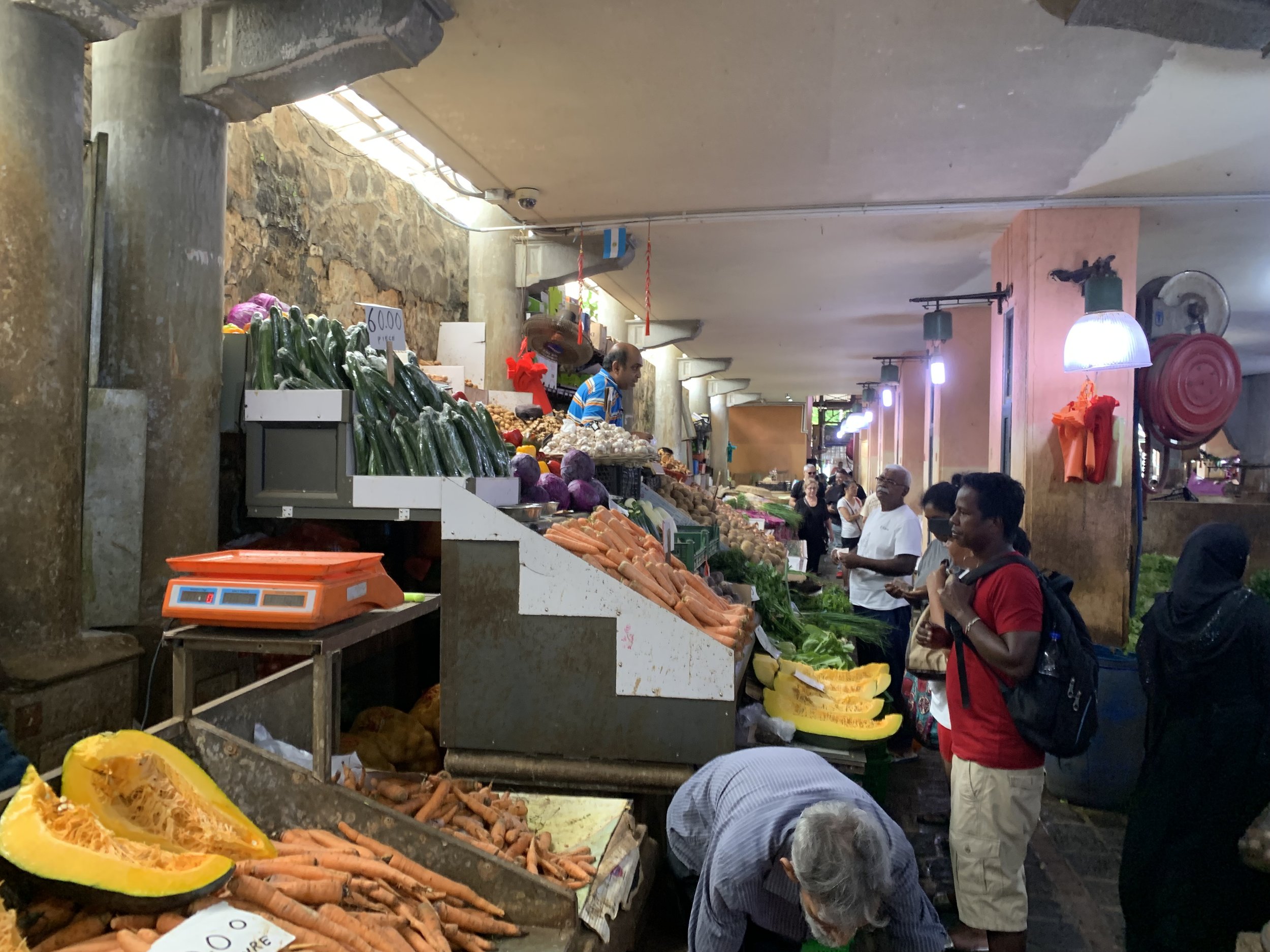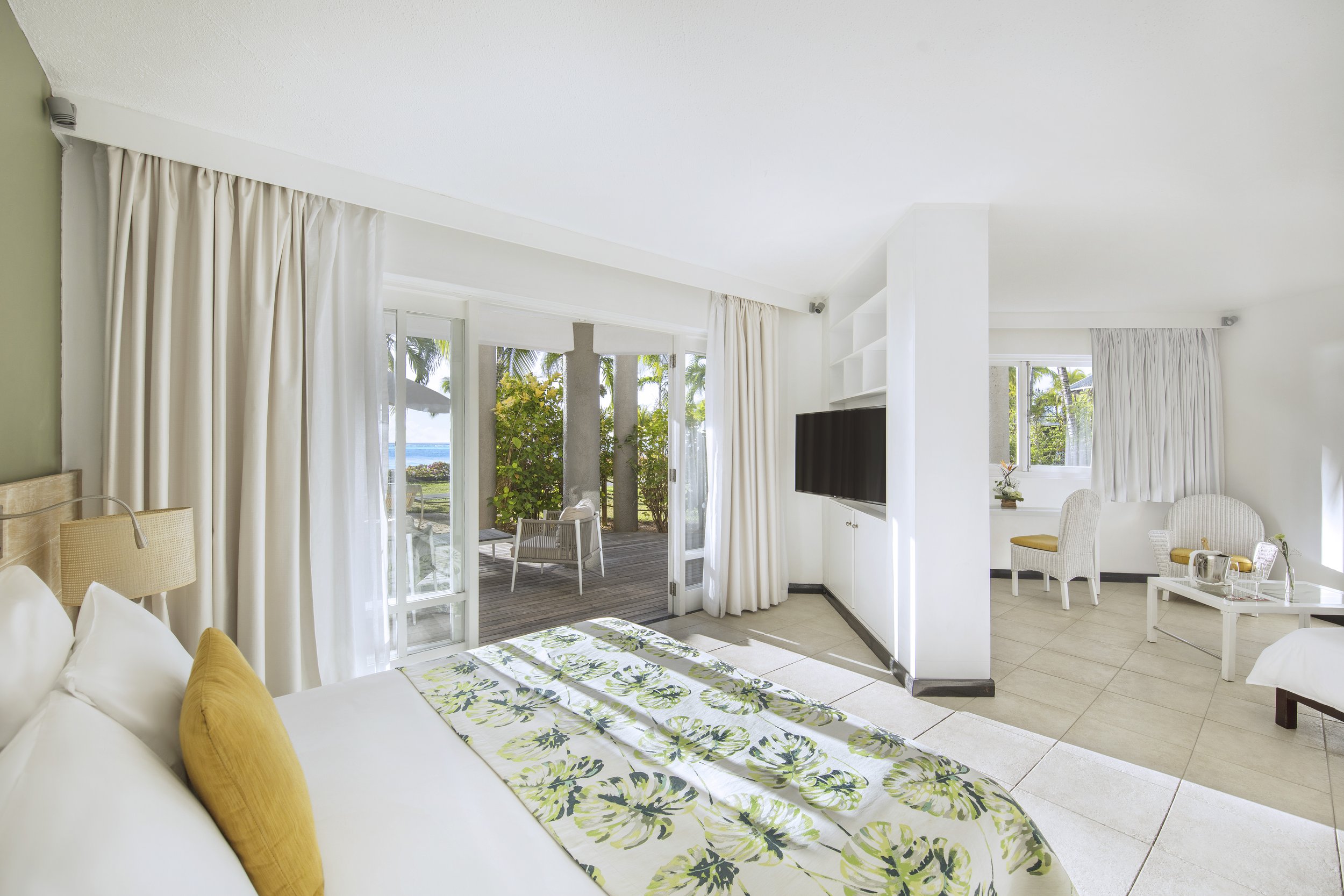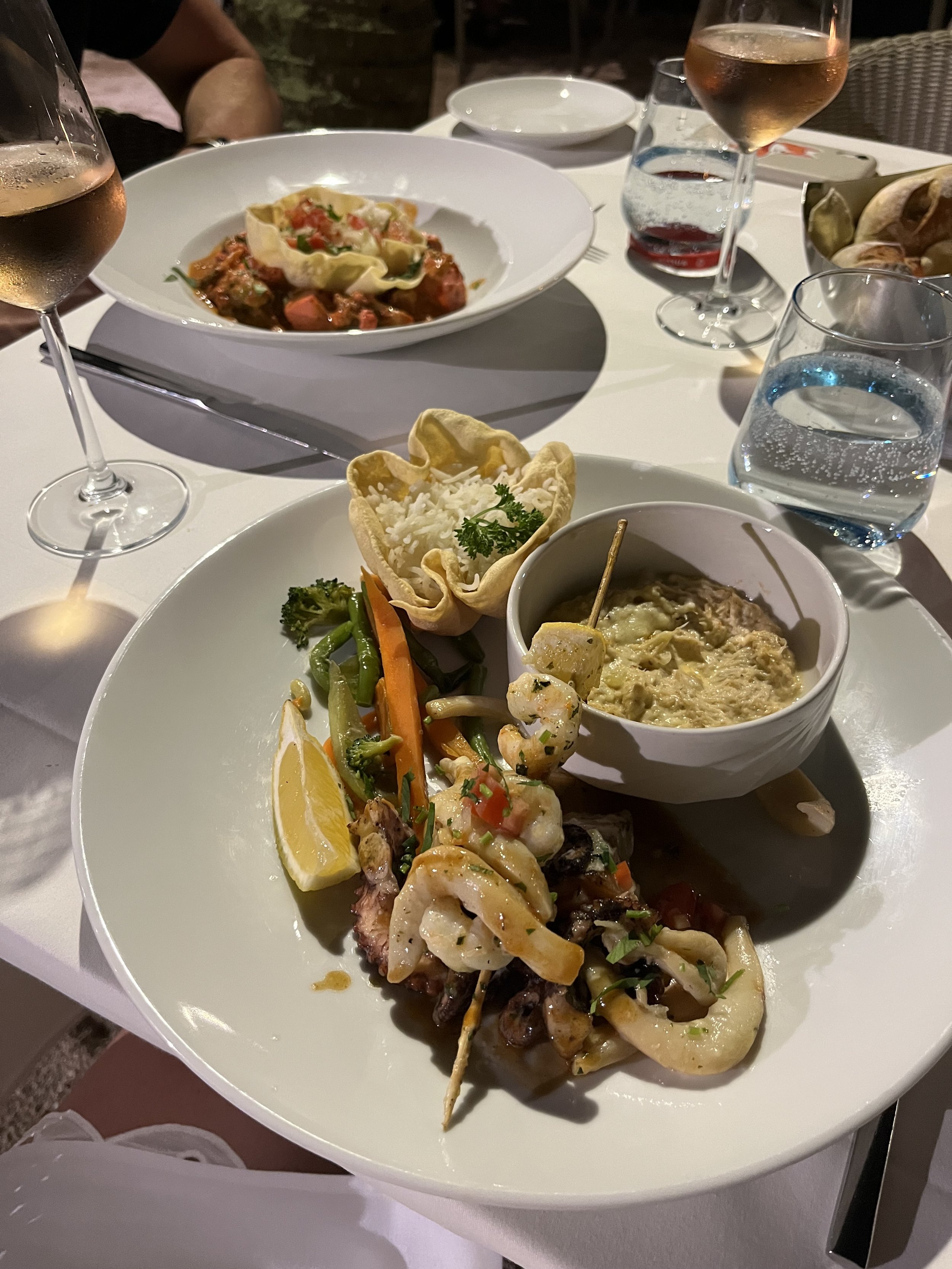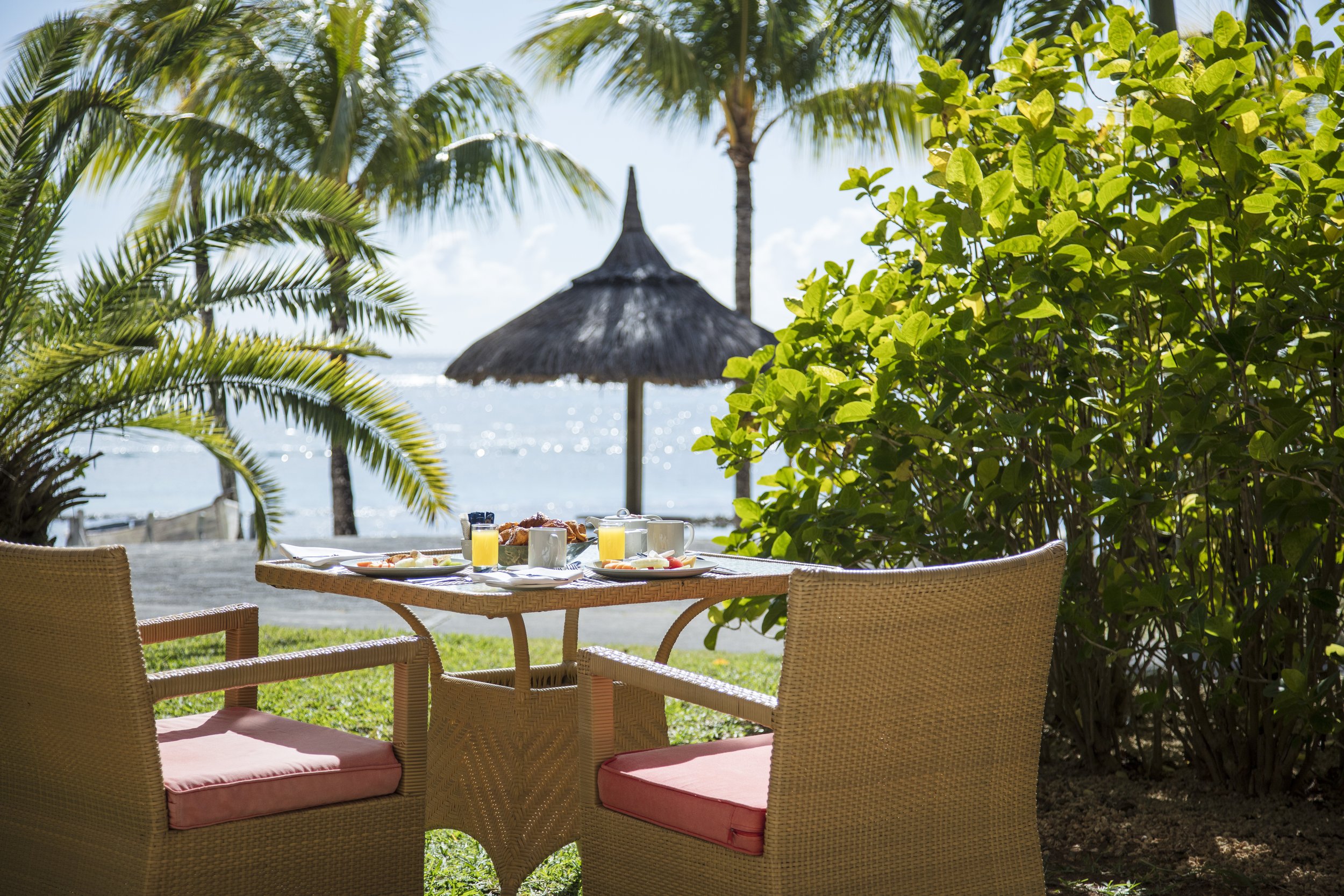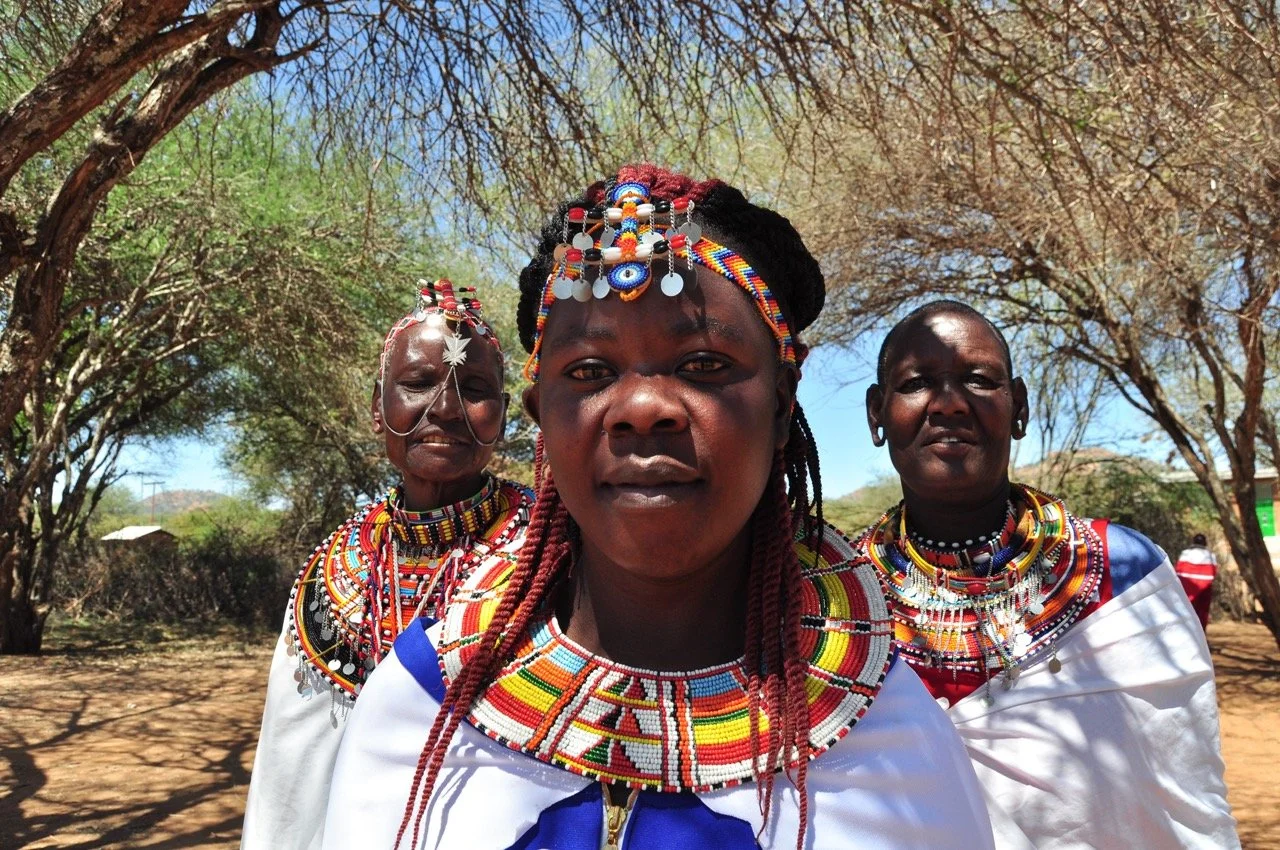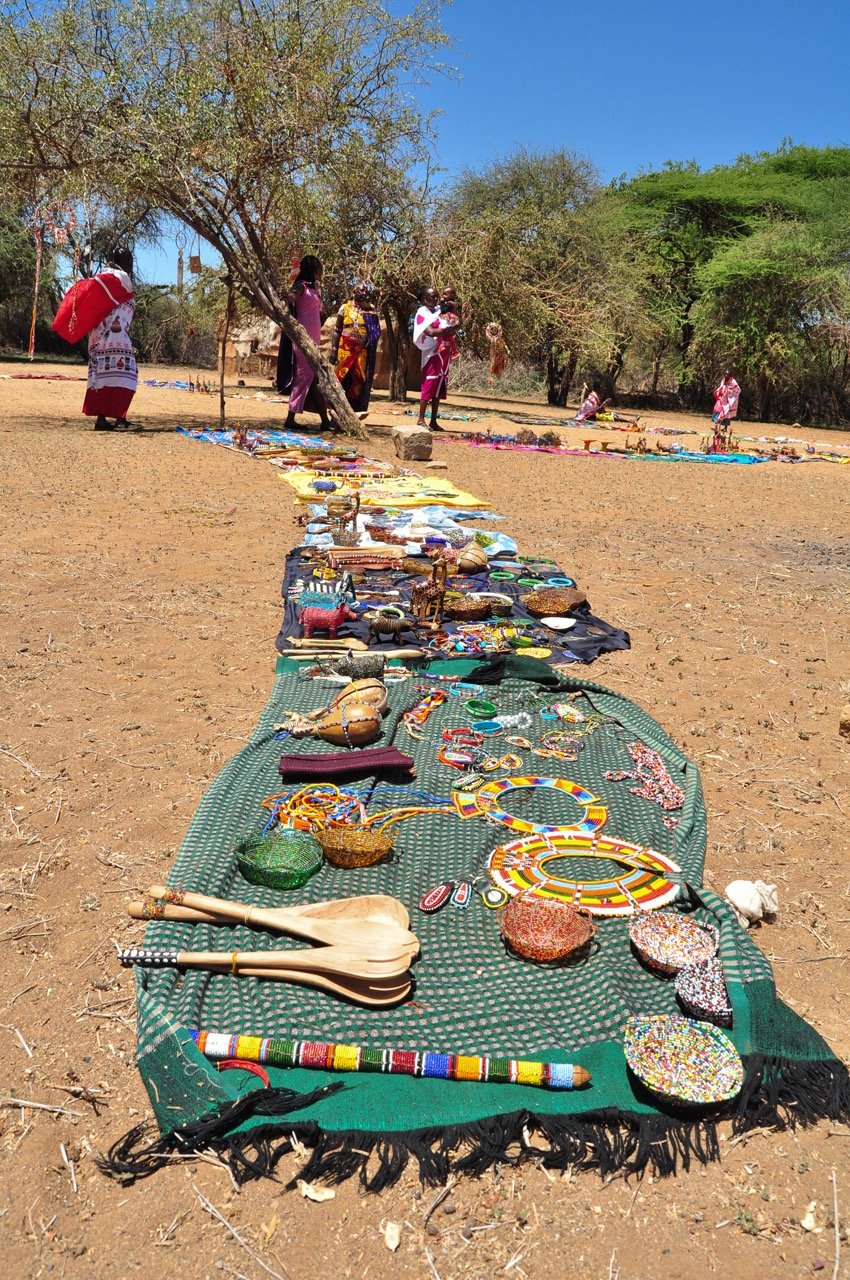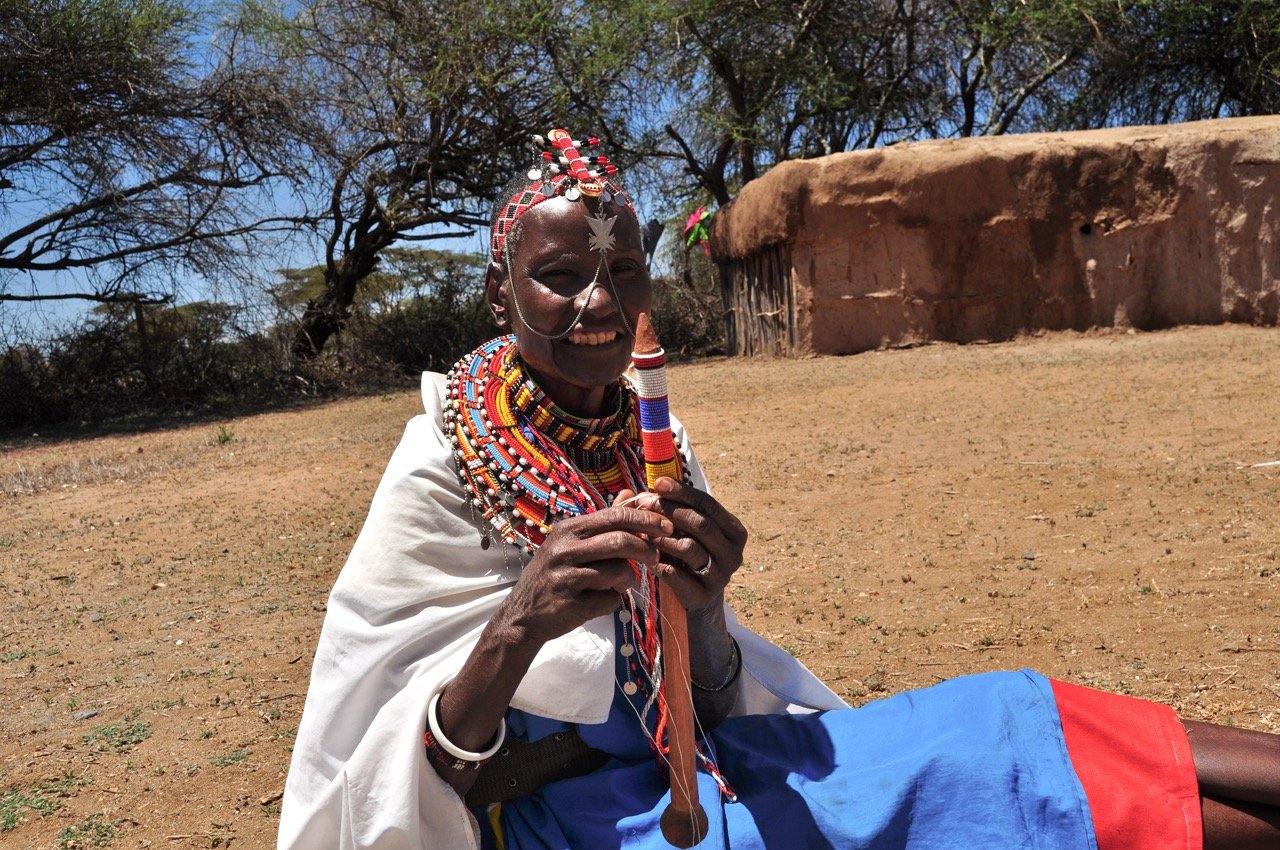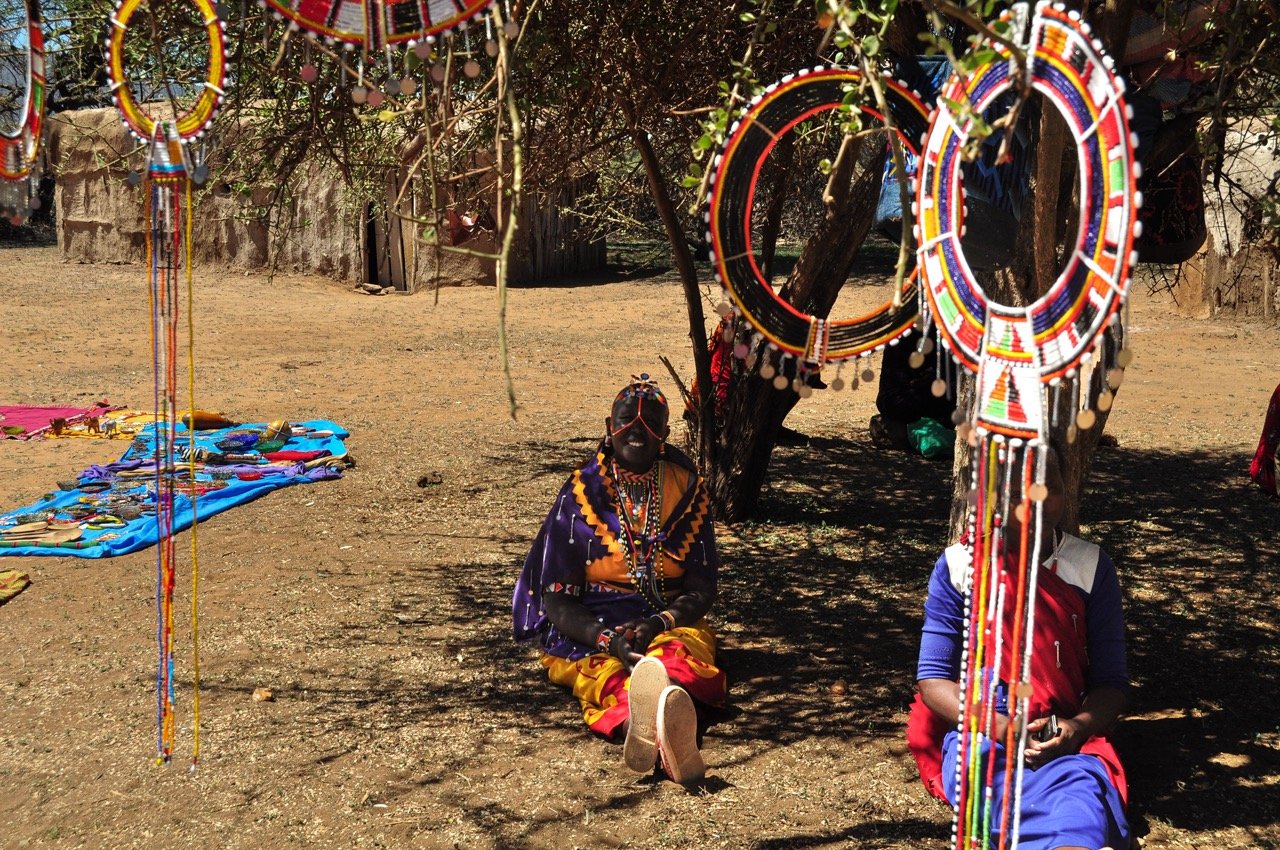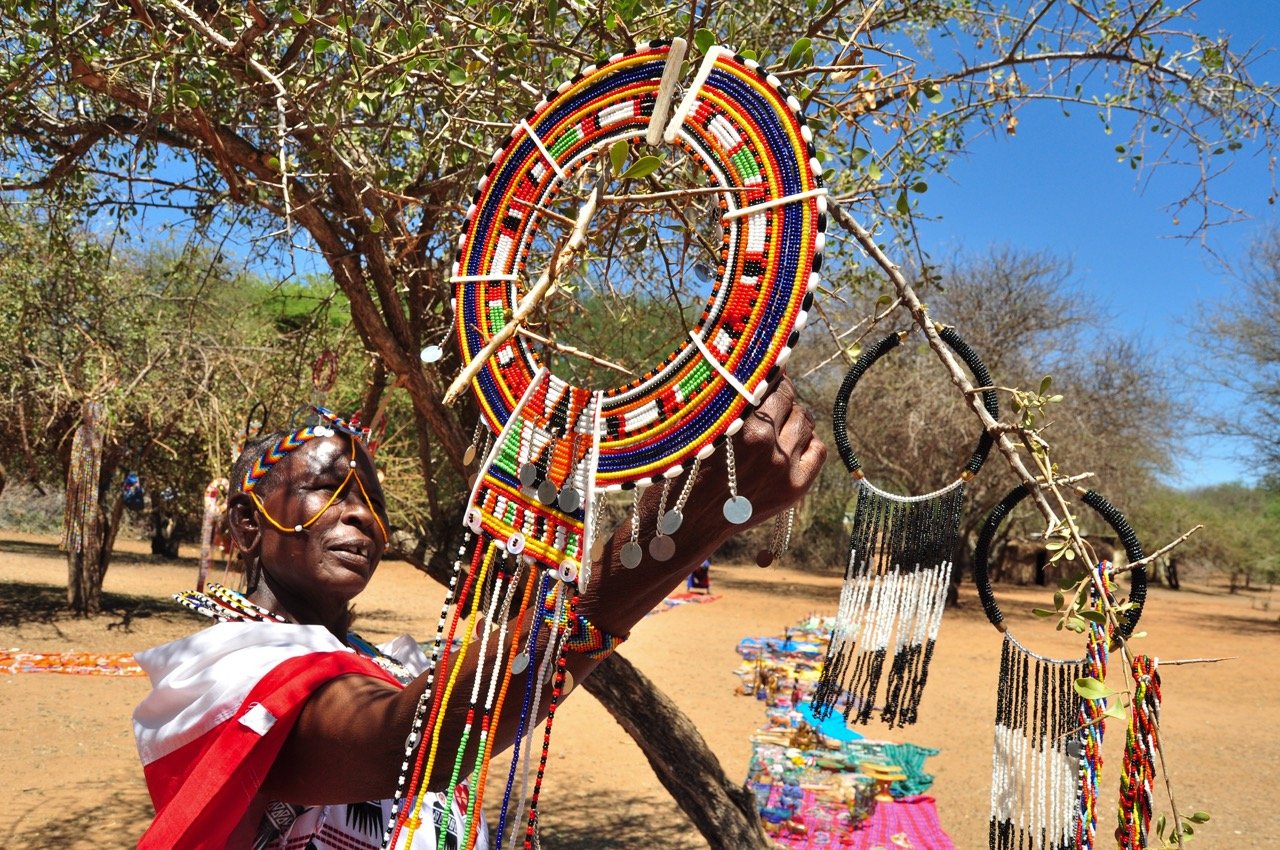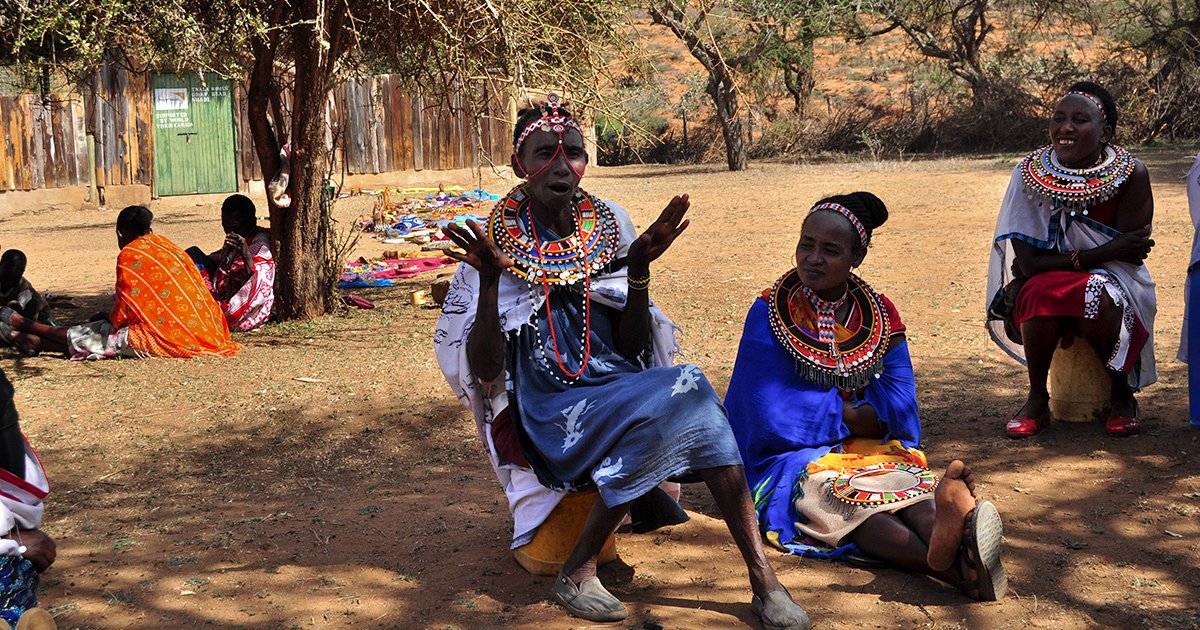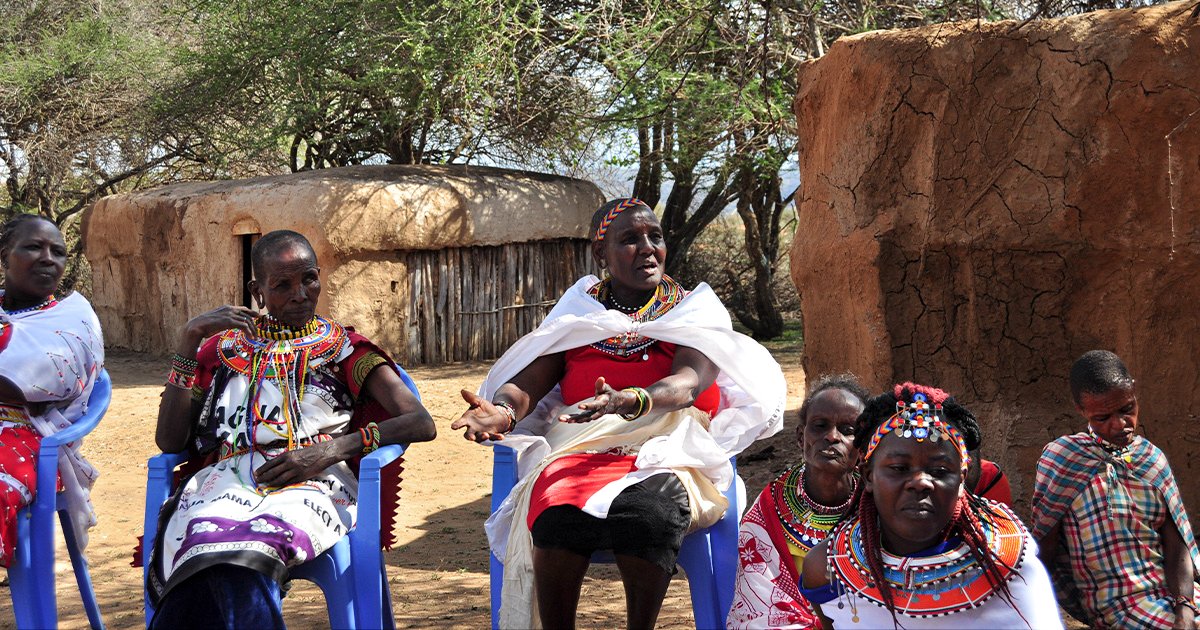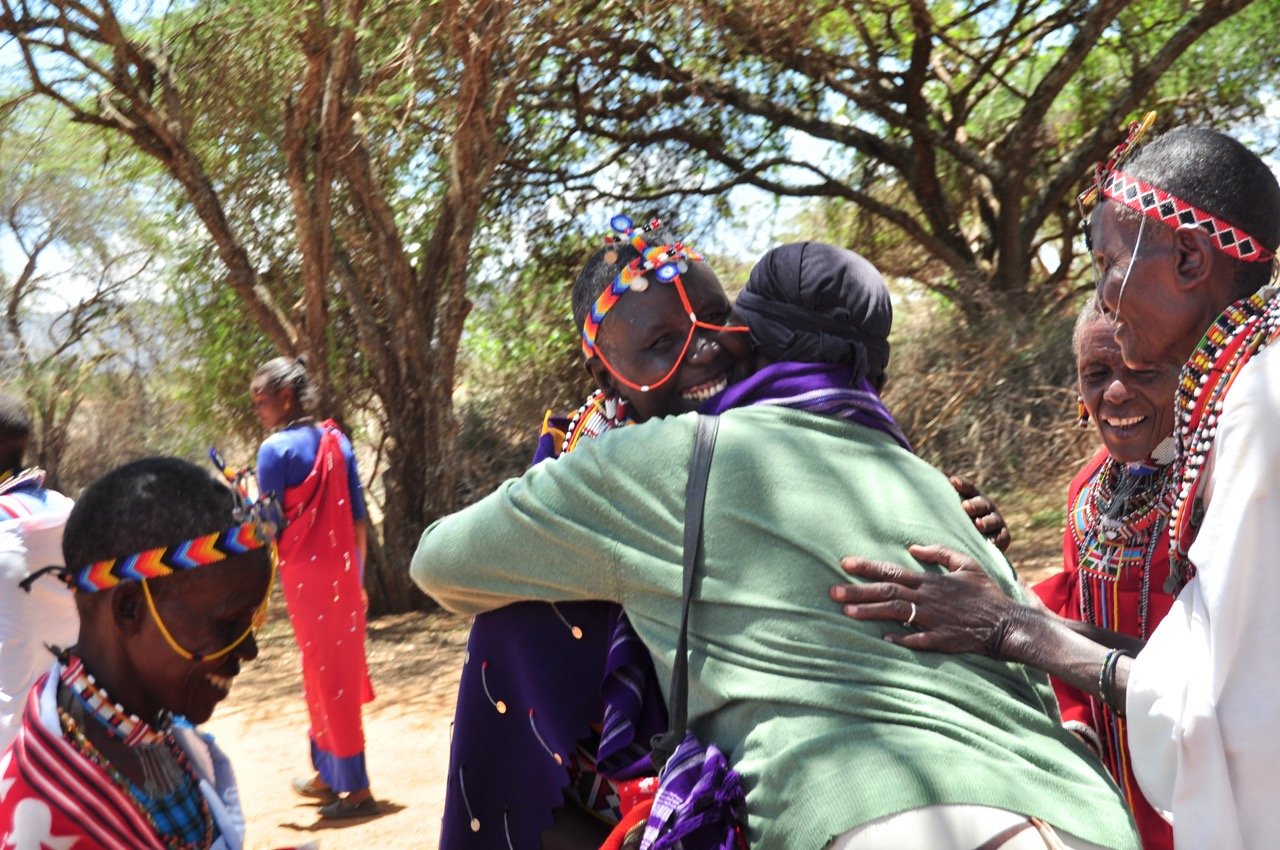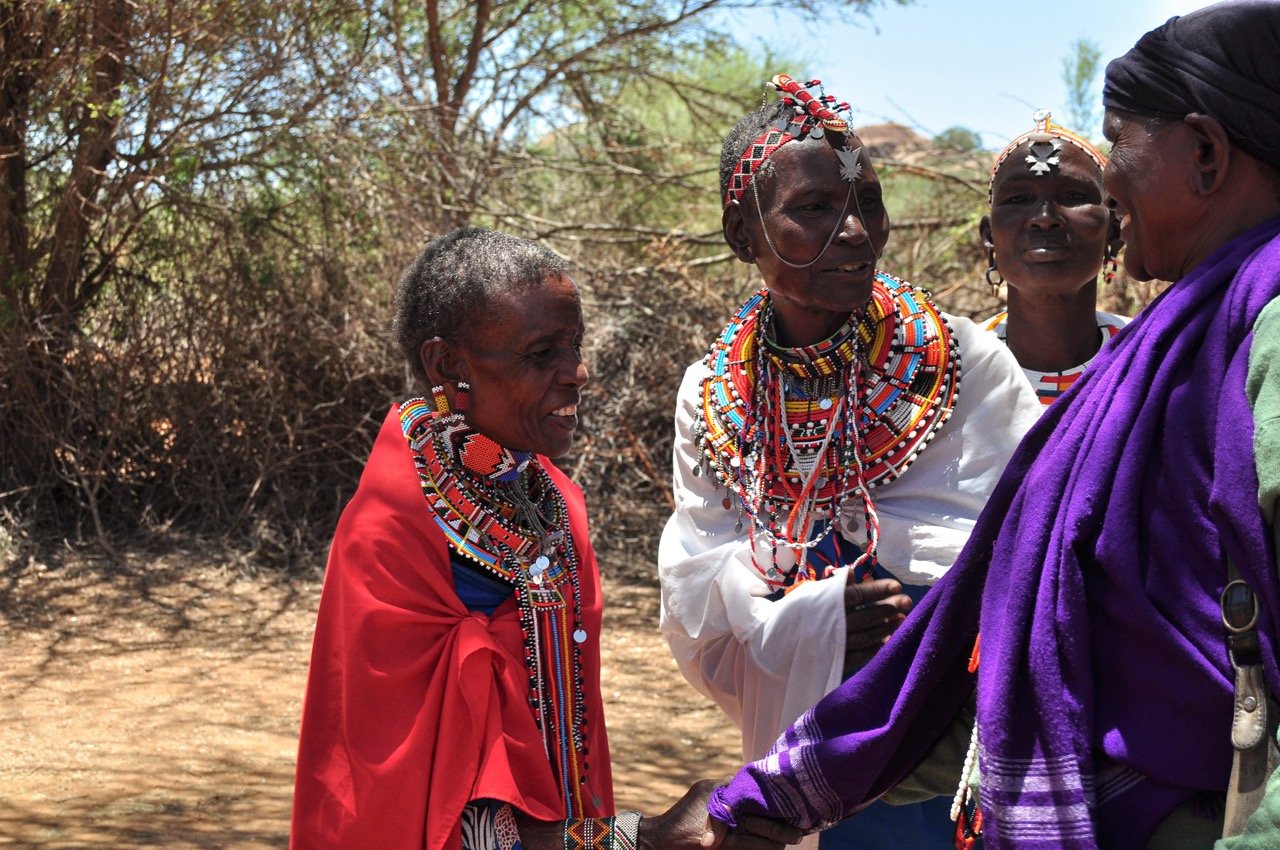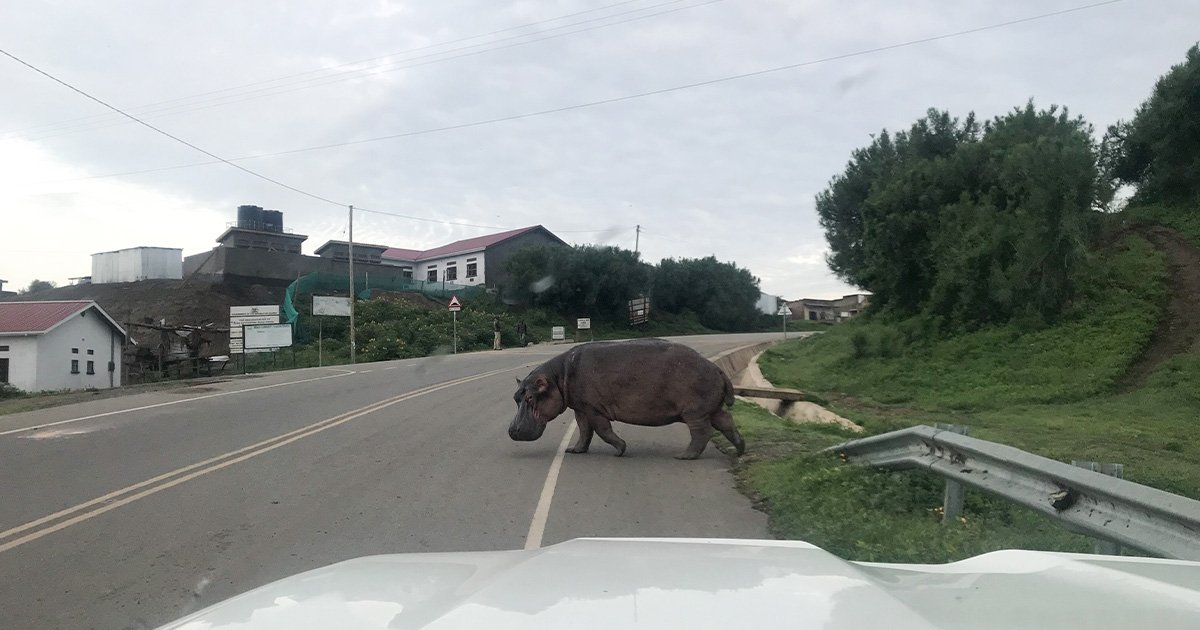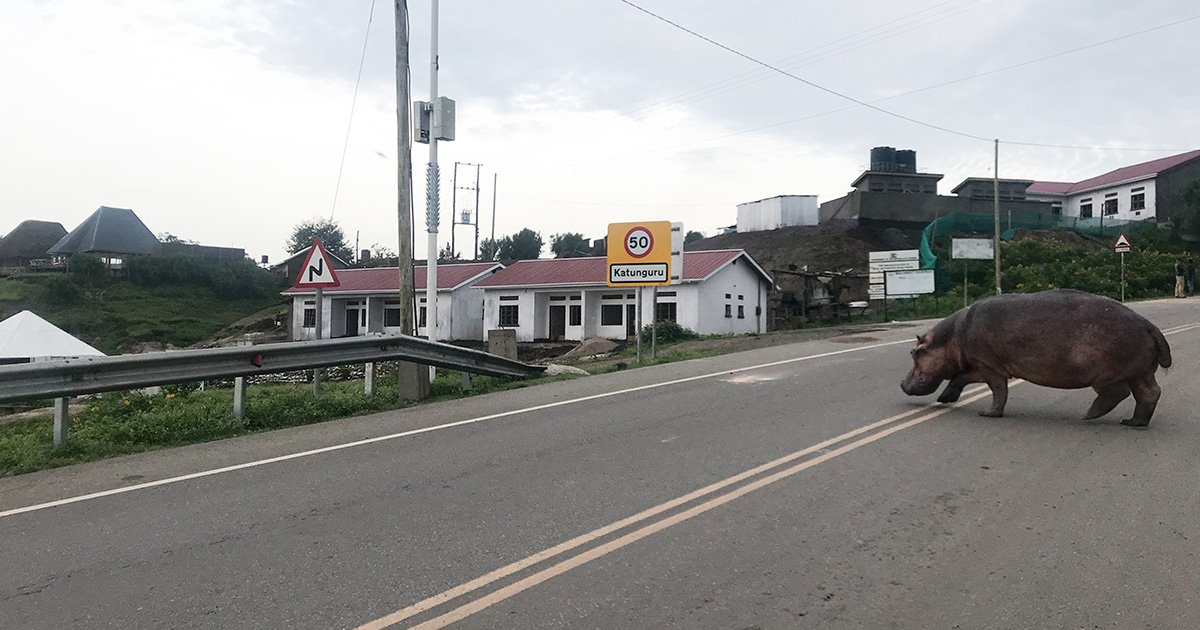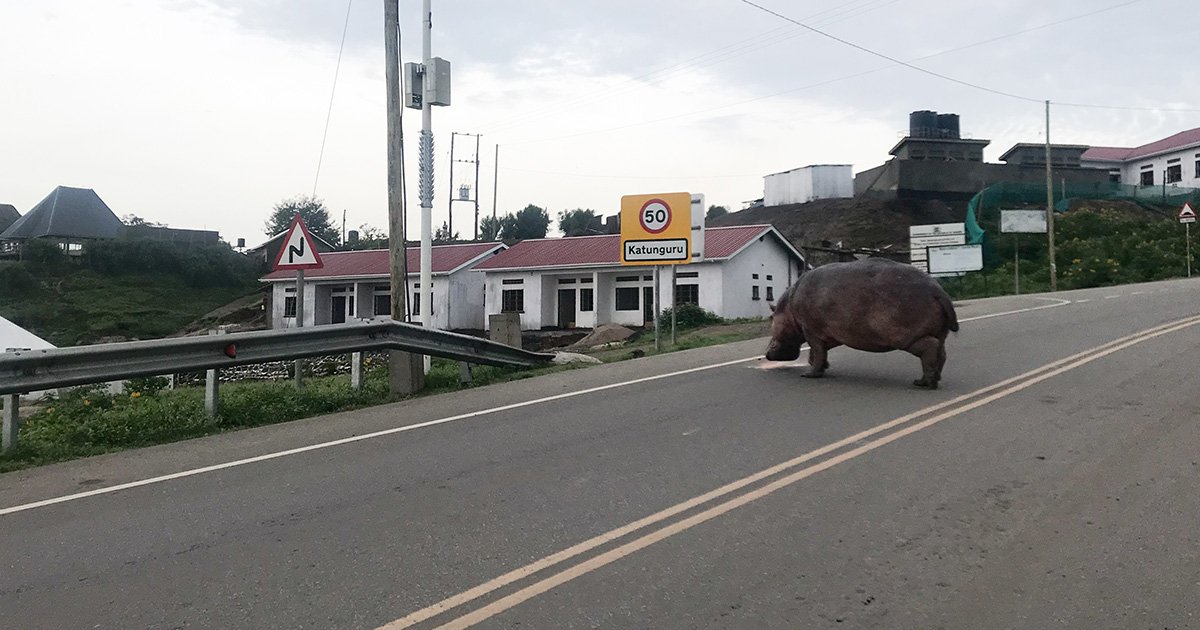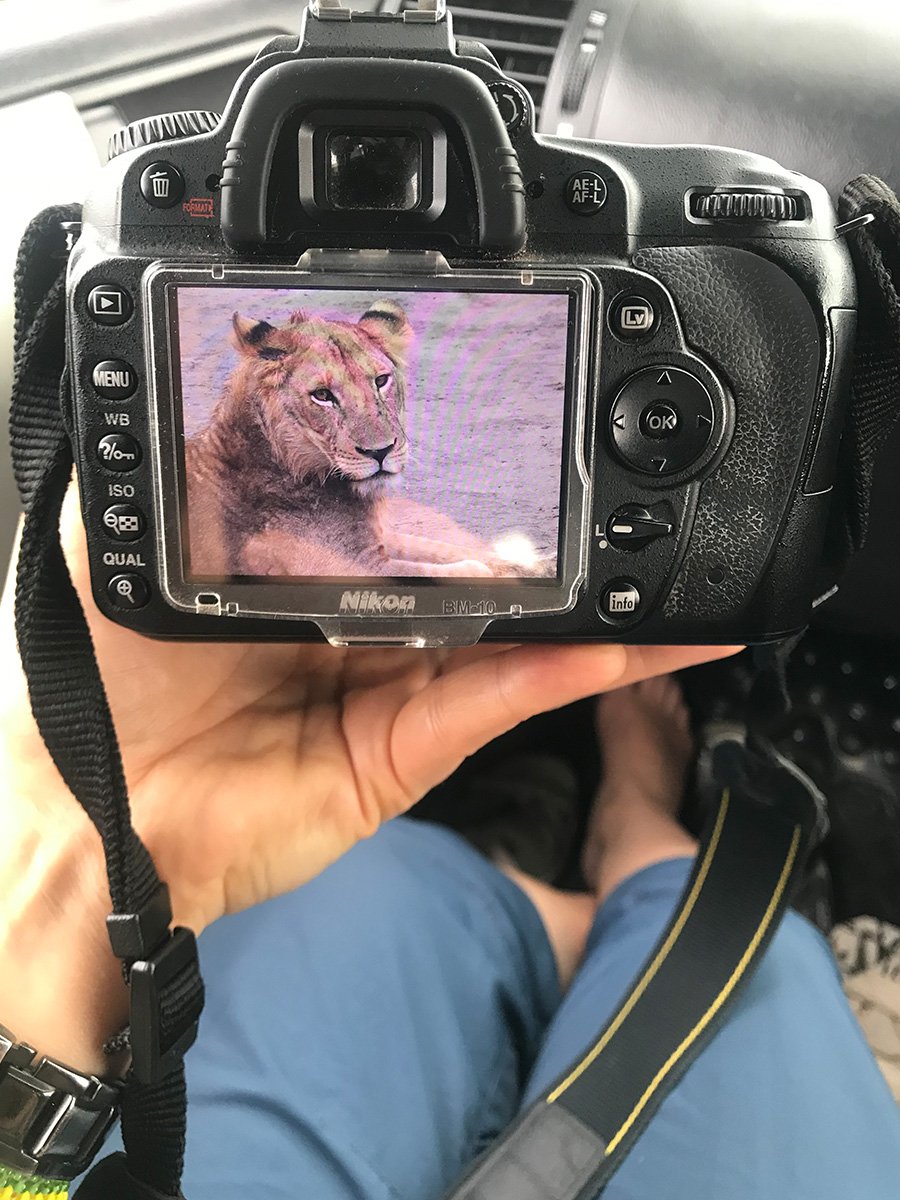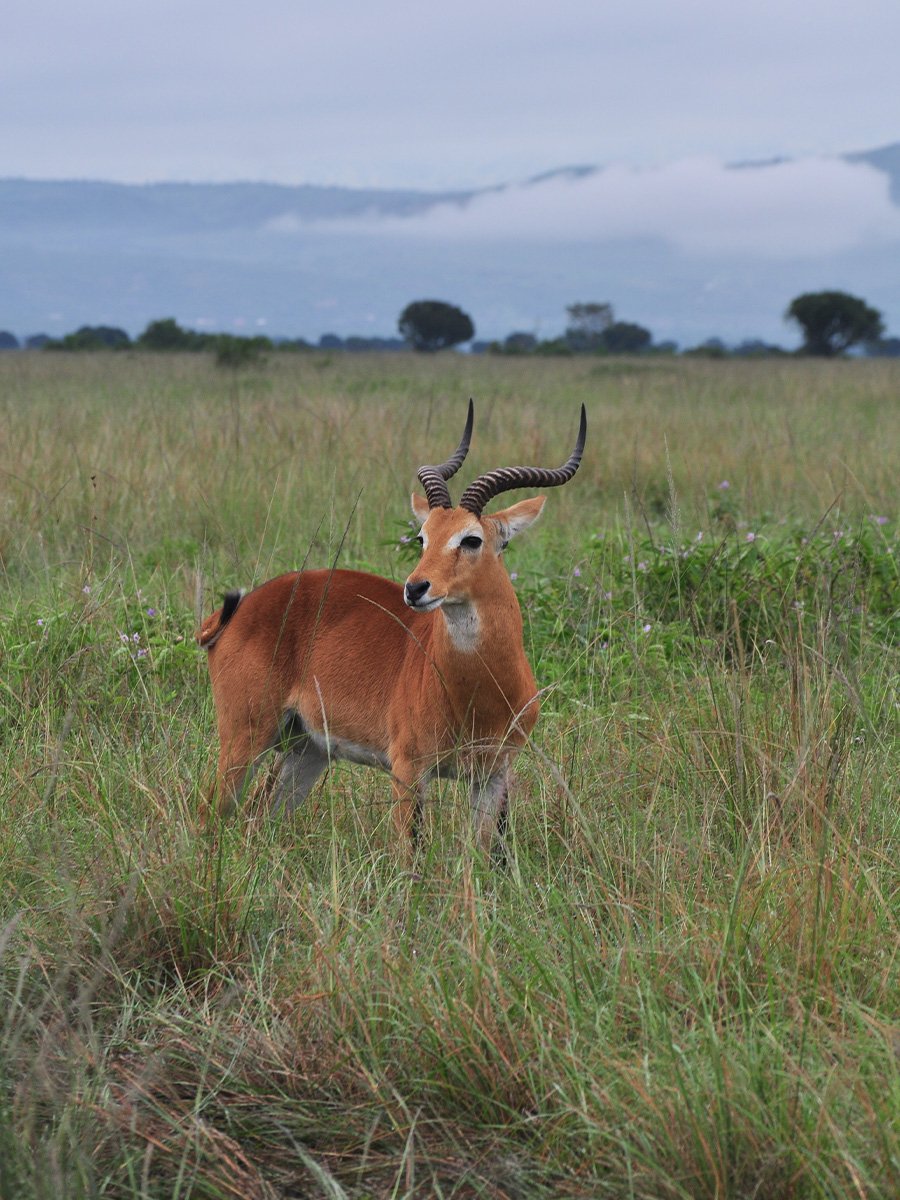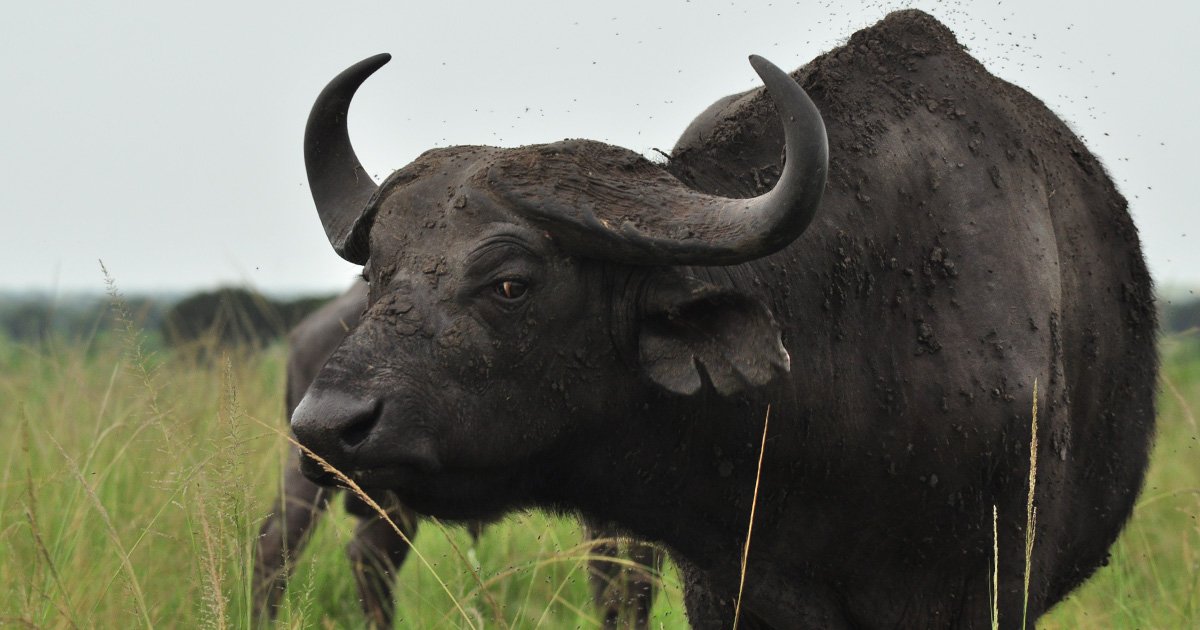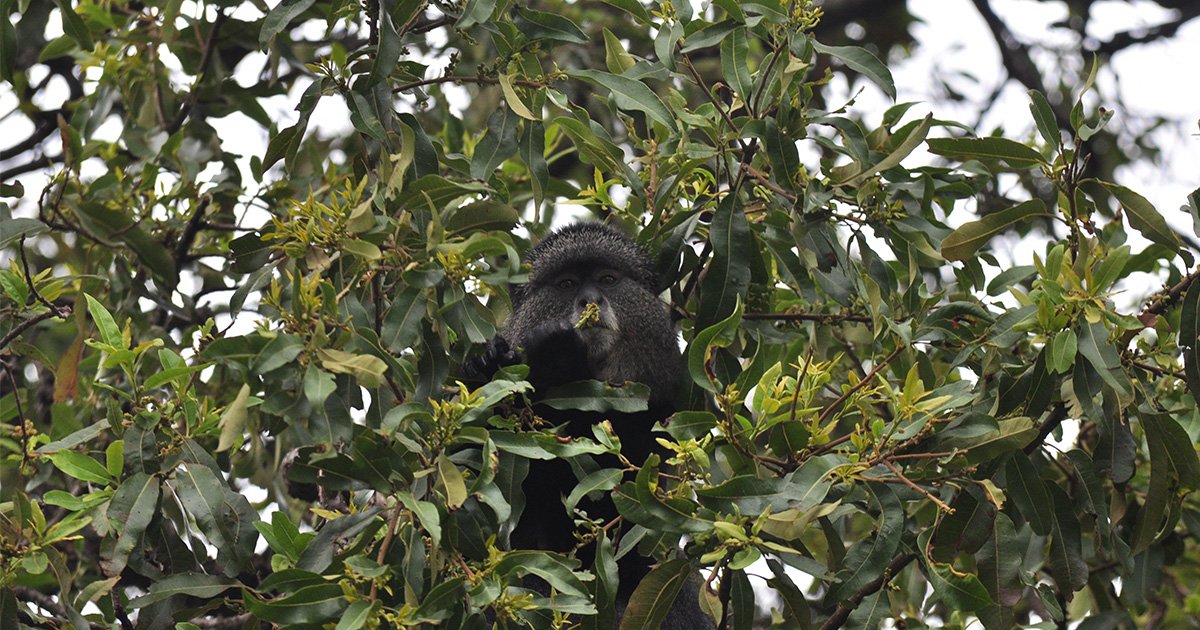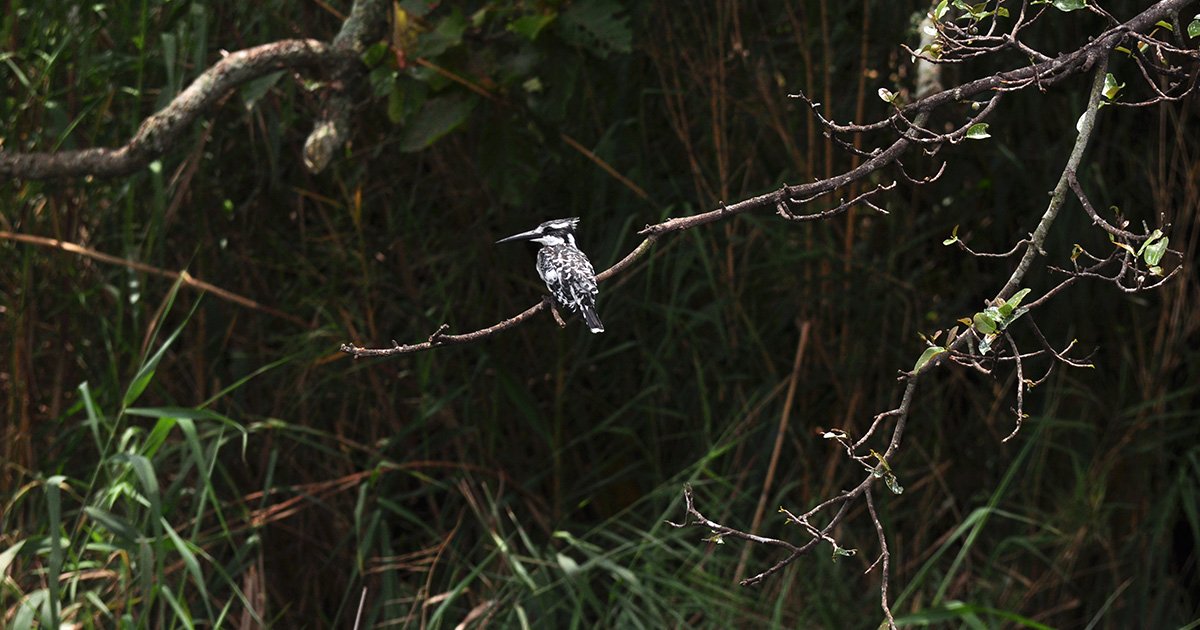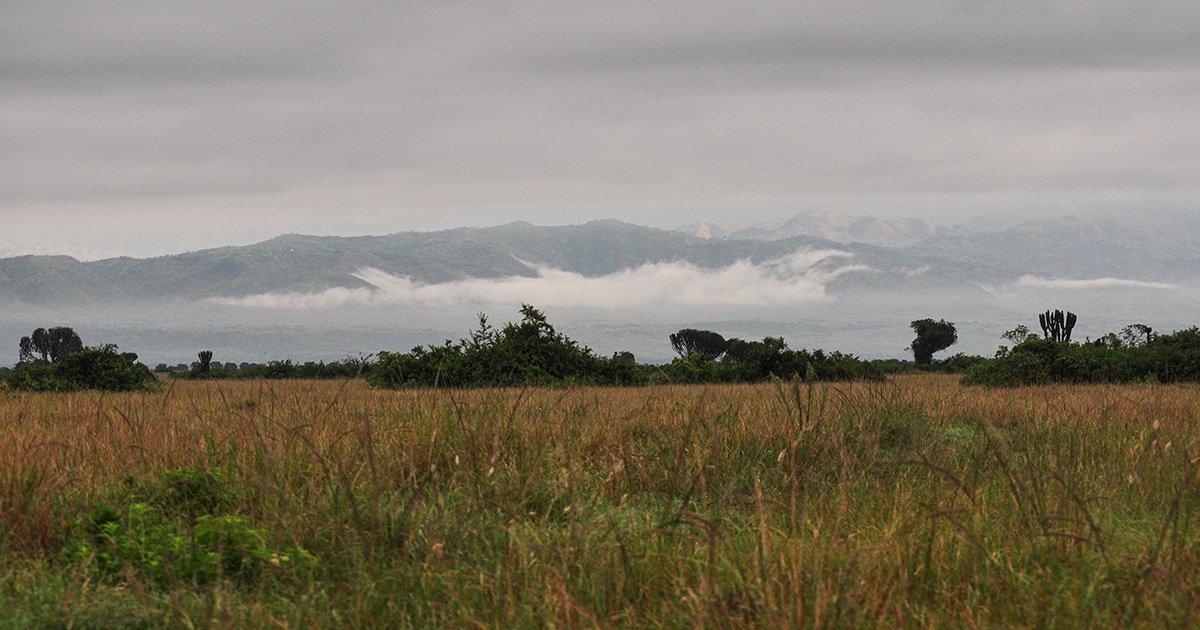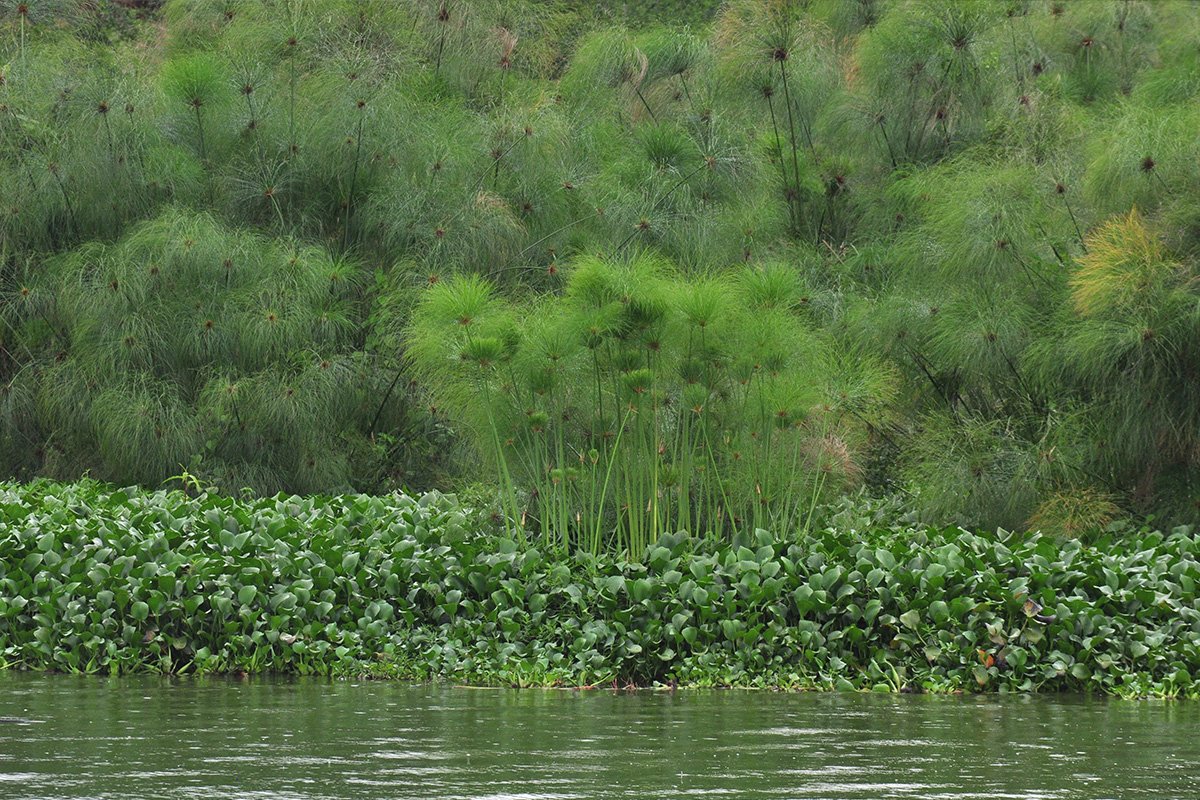THIRD STOP: BARAULI COMMUNITY
We continued travelling across the Western Terai region of Nepal, and after visiting the highly spiritual Lumbini – the birthplace of Lord Buddha – we carried on our road trip toward the widely-known Chitwan National Park.
However, we consciously ignored the famous busy spot and found our destination close to the park’s buffer zone.
Our group, tired from the long, hot journey, received a reinvigorating warm welcome from two lines of women dressed in their traditional outfits, standing on both sides of the road, at the entrance to their community. They were singing and holding fragrant flower necklaces we received, as a custom, with the gentle marks on our foreheads.
EMPOWERED WOMEN
Nowadays, we hear a lot of talk about women empowerment, especially when it comes to Community-Based (AKA Community-Led) Tourism Enterprises. I oblige myself to search for what that looks like beyond the label we often apply.
I previously found it in the smiles of the Rwandan women in Kigali and amongst the looks of the rural female entrepreneurs in Central India, or the Laikipia Maasai in Northern Kenya or among the Kerala women. In the Barauli Community, though, it was more of a feeling spread in different directions and contained in different subtle details.
I found those clear signs beyond the names engraved on the key holders of the homestays, as well as beyond the normal cultural shyness of the ladies’ manners. I found it in the way the women were interacting with each other when we, guests, were around, almost unconcerned with us and definitely not trying to adapt to or please us.
They were also visible in the posture my host Teji held in front of the cottage where I was staying that night, with her name on the door. As well as in the way they spoke to their audience, looking us in the eyes, even though they were speaking softly and quietly.
I witnessed the full power of that inner strength – built over time with the support of the collective and organizations such as CHN – when the young Isha, the leader of the local women’s group, stepped on the stage with other Nepalese women, a few days later at the Community Connect event in Kathmandu.
DRESS FITTING, LINE DRAWINGS AND WALL PAINTING
After the next day’s breakfast, all the visiting ladies were invited to follow the local women to one of the cottages where a special cultural ceremony was about to start, the first of three we had that day.
Dressing in the traditional attire, from head to toe, was a wedding-like experience. We let them surround us with the fabric, gently but firmly wrapping us in it. While two pairs of hands were creating the right number of creases around my waist, other hands were trying to gather my hair in the most fashionable style possible, given the unusual short length. Our arms and necks gained elegant jewellery, and our heads were adorned with precious decorations that felt and looked like little crowns.
Once transformed for the occasion, we were ready to leave our marks on the wall. We were taught one traditional wall painting style done with bare hands on the mud surface.
Leading with a thrilled smile, Teji approached us with a big grass tray carrying the white, black and red organic pastes made a few minutes earlier, that we would use to express our creativity.
The group’s initial embarrassment quickly vanished, and new combinations of the three colours created artistic shapes and lovely drawings which received the admiration of the local residents.
For the last activity, we sat in the fresh communal room and extended one of our arms on the table in front of us. Facing us, on the other side of the table, there was a young lady who grabbed our arm and was equipped with a tube of henna paint in the other hand: she was ready to initiate the elaborate lines.
At that moment, while we were enjoying, once more, being embellished, this time with floral patterns, we provided an opportunity for them to perfect their skills under the supervision of the more experienced ones who were moving around, dispensing feedback and advice.
Full of memories, enriched by the cultural immersions and a bit sad for the short length of the stay, we loaded our van with the luggage, ready for the last leg of the trip.
Big beautiful red flowers were given on our way out, which I personally accepted with the promise to come back and ride the bike along the Narayani River for that missed sunset, which I would enjoy while sipping a cup of tea on the riverbank.
CONCLUSIONS
While people were still queuing to reach the peak of the world, I was invited to take a completely different trail, far from the Himalayas, to travel to the deepest and rawest grassroots level.
My view of the world changed, and it became much broader and warmer as a consequence.
I tasted and enjoyed the organic ingredients of healthy meals, and my concept of a ‘tasty meal’ is now closer to the soil than it was before, and surprisingly simpler.
I learned how to make new shapes with flour and water, improving my manual skills only to enjoy the results of my efforts in good company and through loud waves of laughter.
I felt the warmth of sincere human bonds beyond words.
I experienced the wilderness without disruptions or noisy visitors.
I witnessed rare and unique traditional cultural dances I'd only read about previously in books.
I know that my trip has supported the empowerment of rural communities and marginalised segments of traditional societies – read ‘women’ – not because they told us so, but simply because I saw it in real, unfiltered life.
A trip can be fulfilling on a human level and beneficial on many other levels, too.
Reach out to Elisa at elisa@travelmatters.co.uk if you want to explore Nepal from a unique and new perspective, combining indigenous tourism and meaningful cultural experiences with conscious luxury trips for a transformational journey.
At Travel Matters, we work closely with renowned brands that work closely with local communities in a responsible and sustainable way.
If you want to contact Elisa, please feel free to make an Enquiry today!
(This blog has been written by Elisa Spampinato, a travel writer & Community Storyteller, CEO & Founder at Traveller Storyteller. Photo Credits by Elisa Spampinato)


